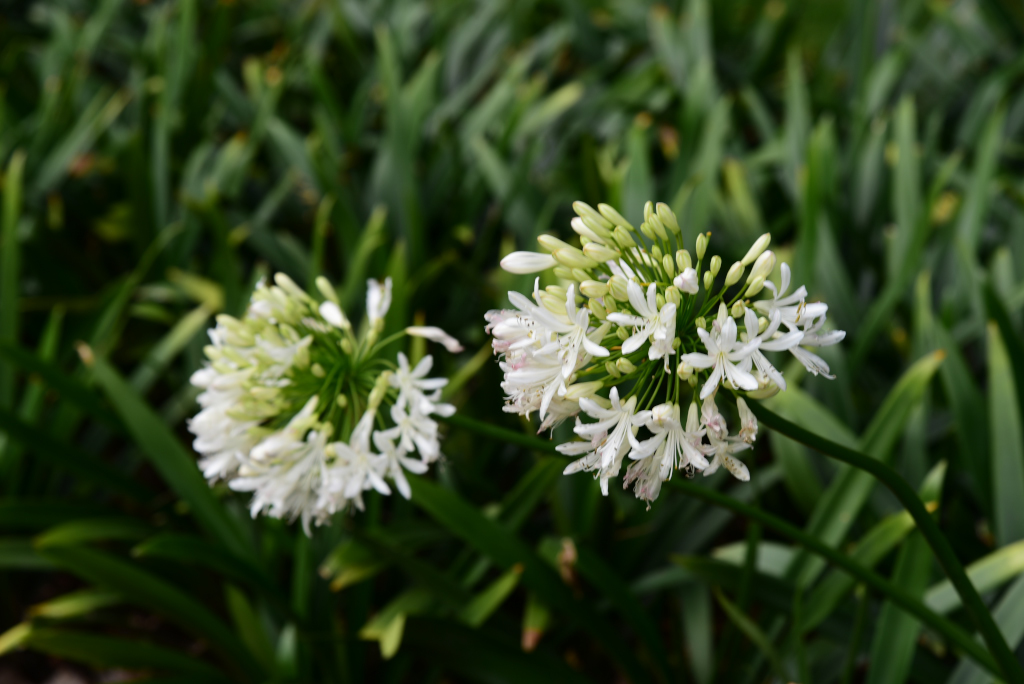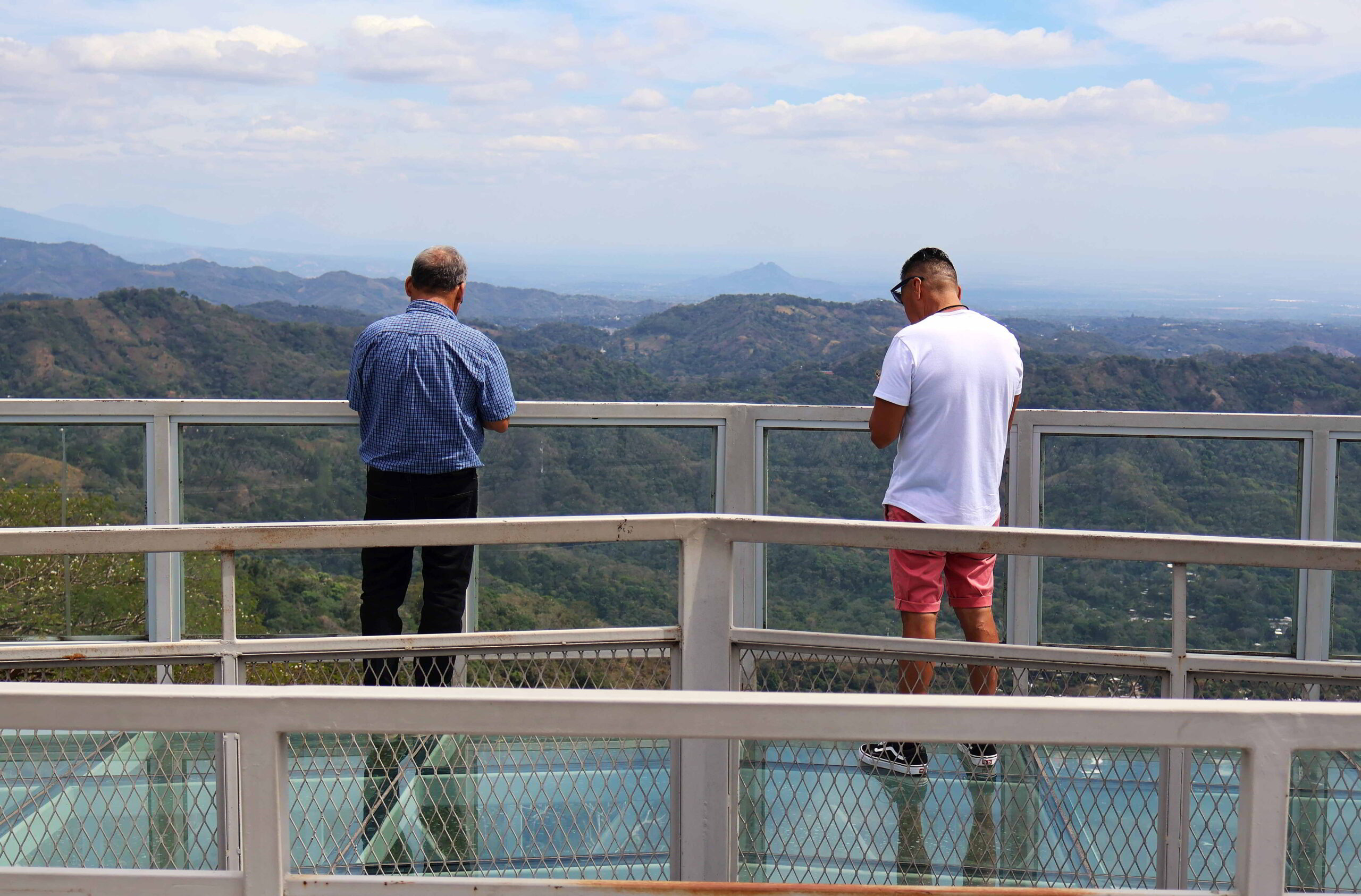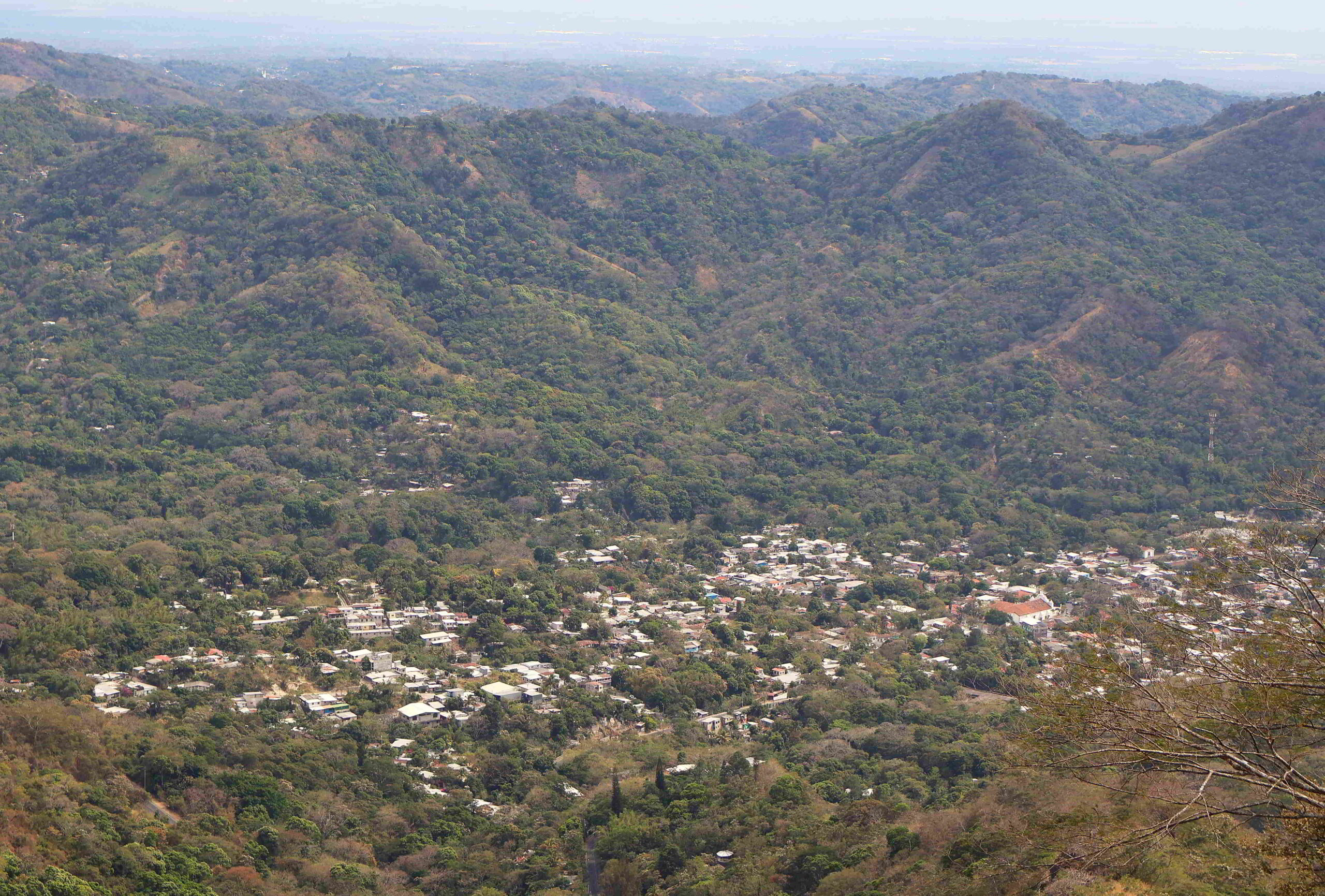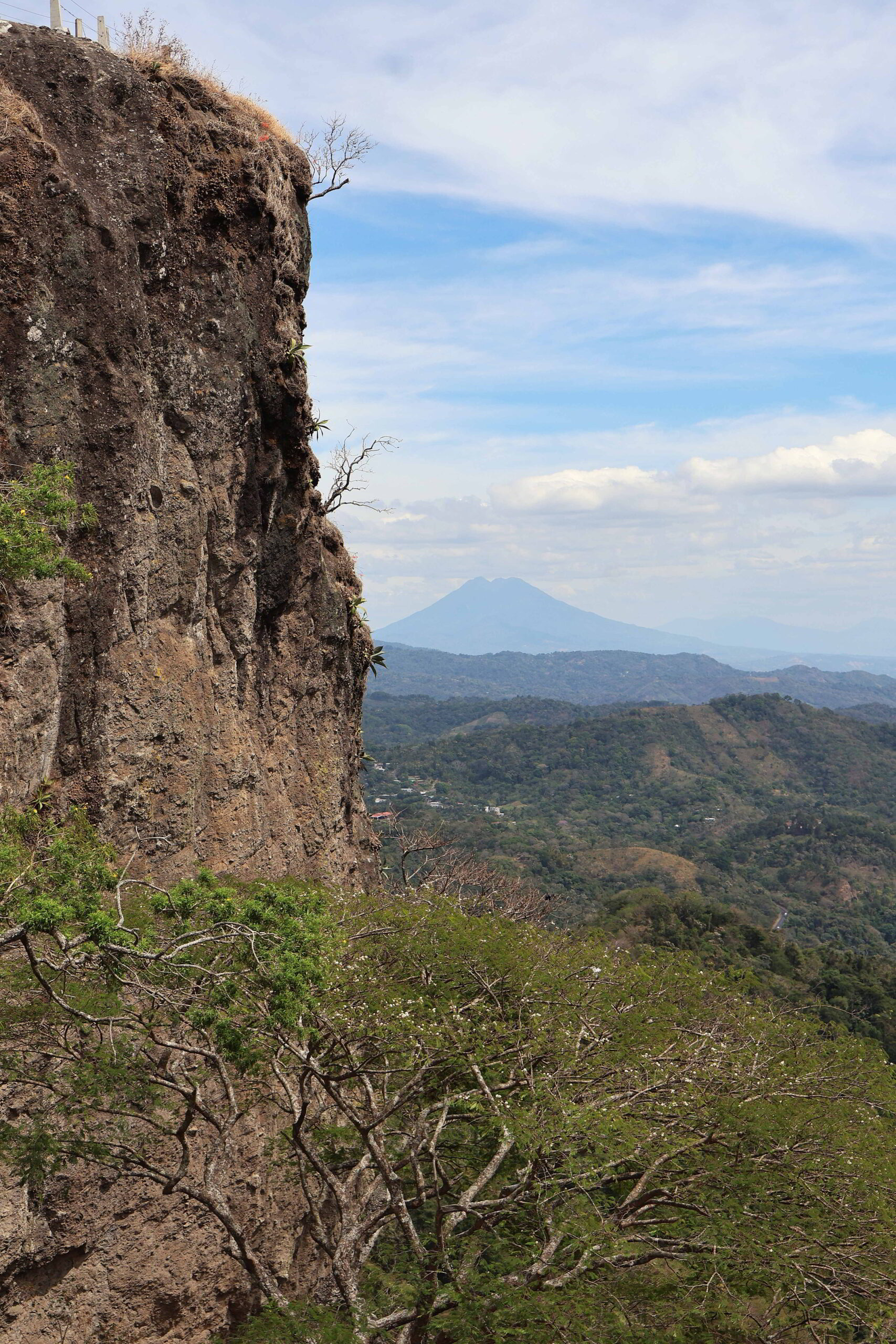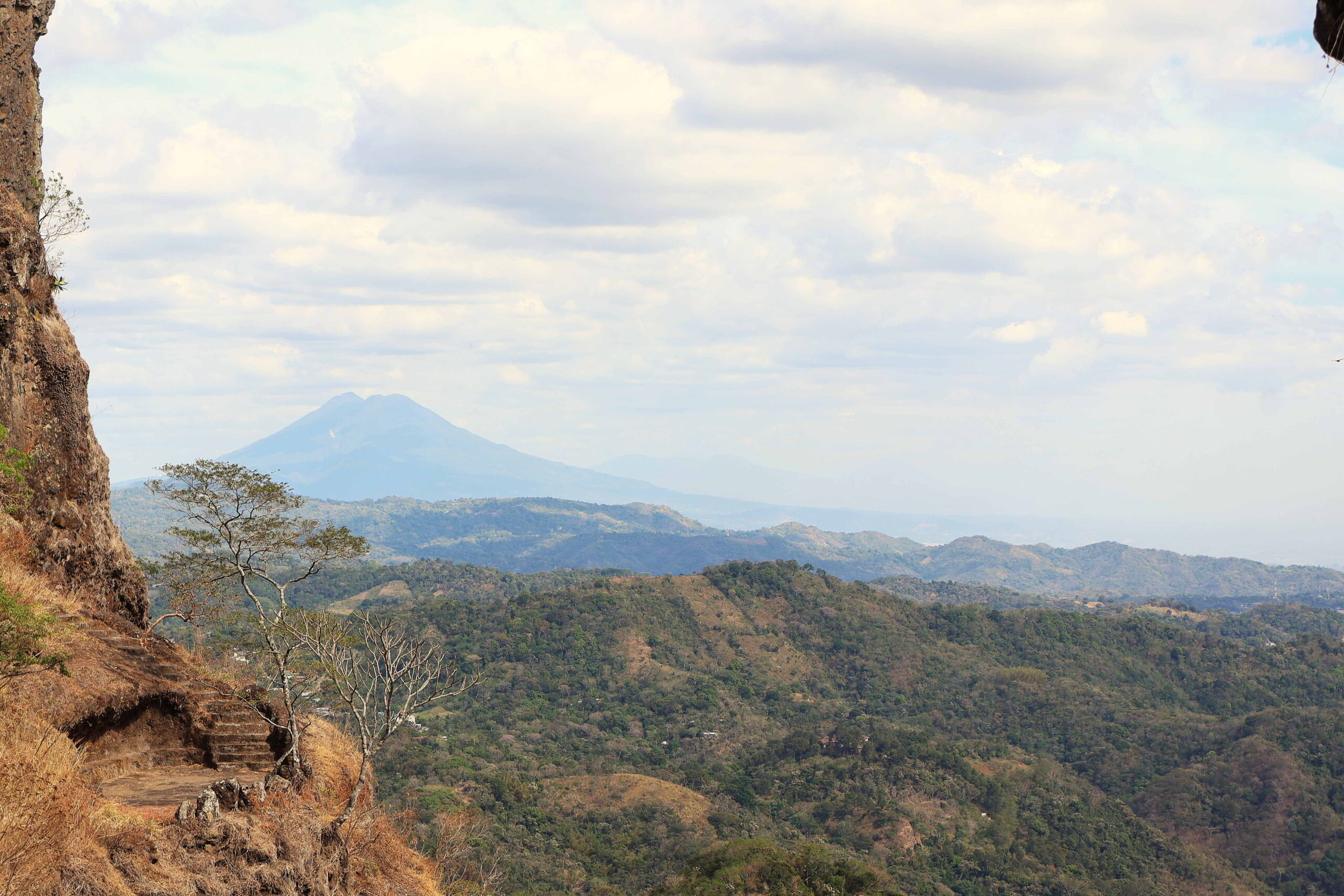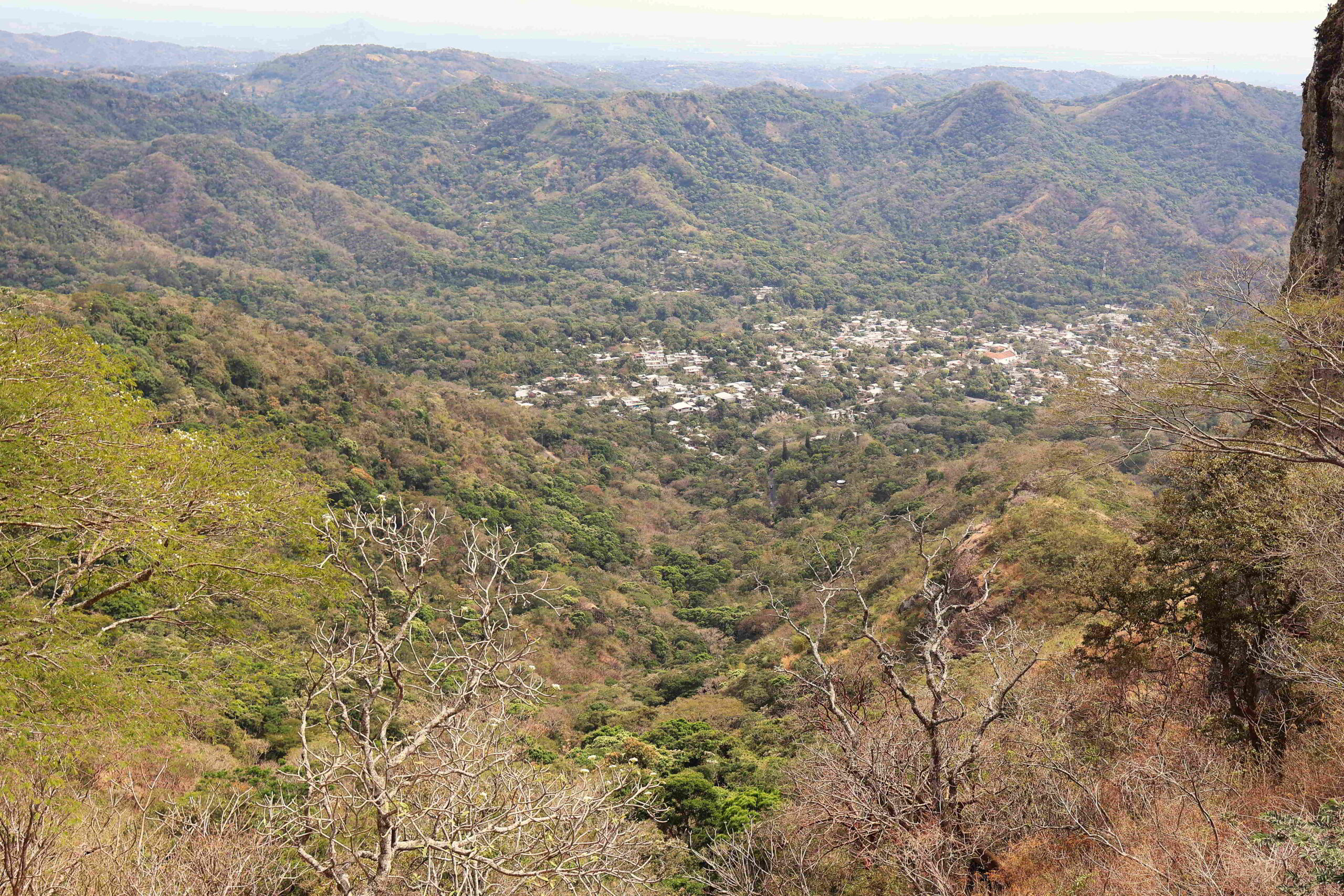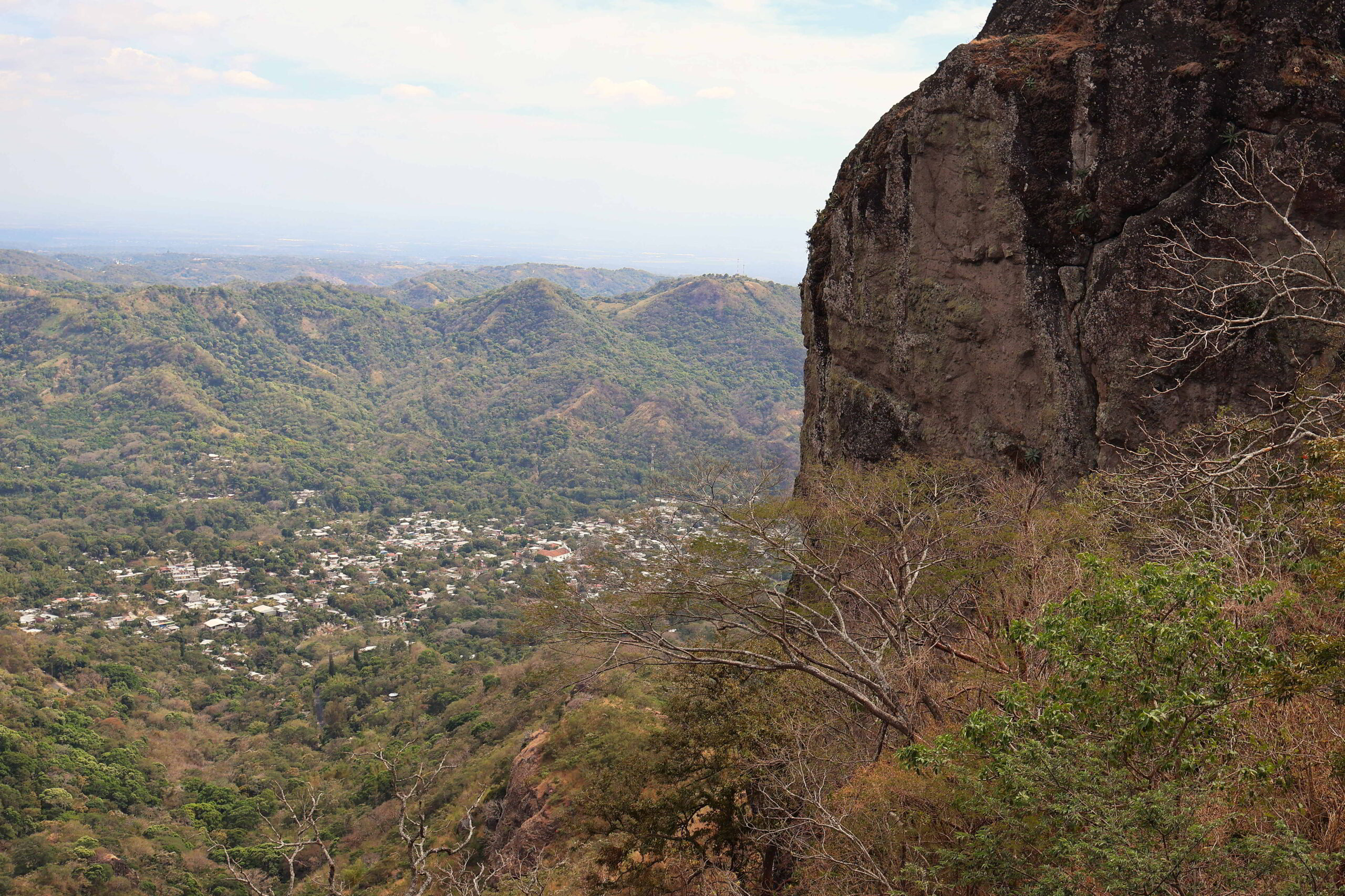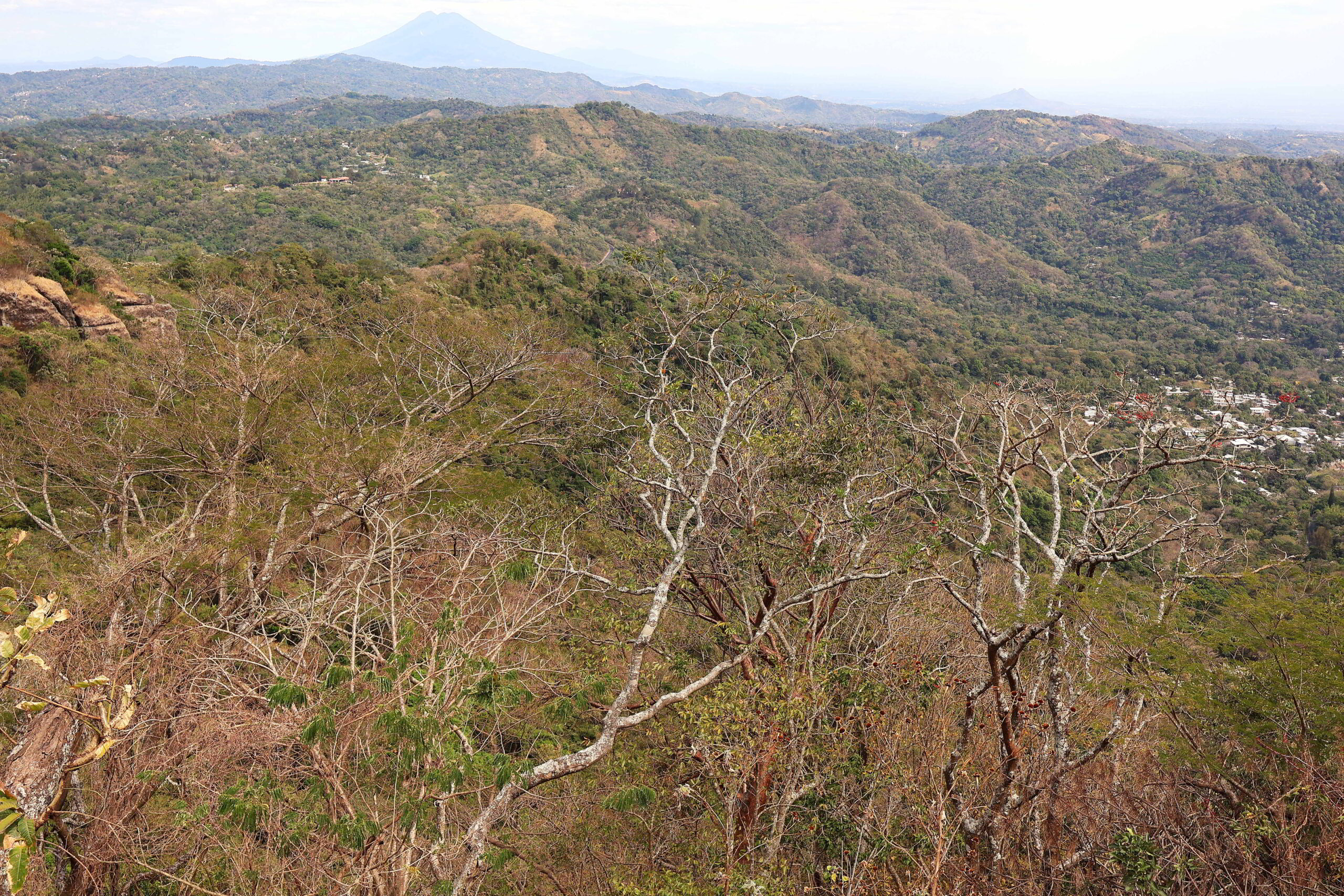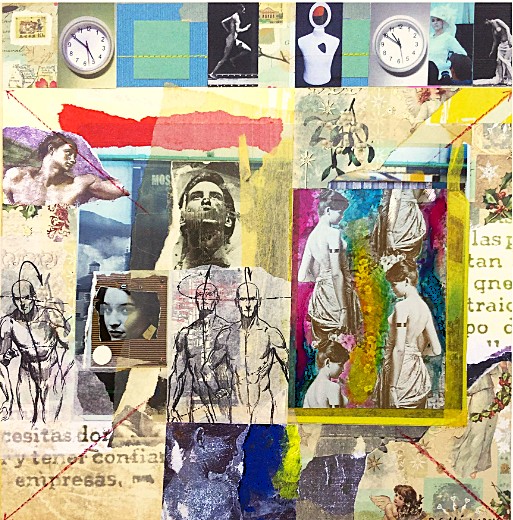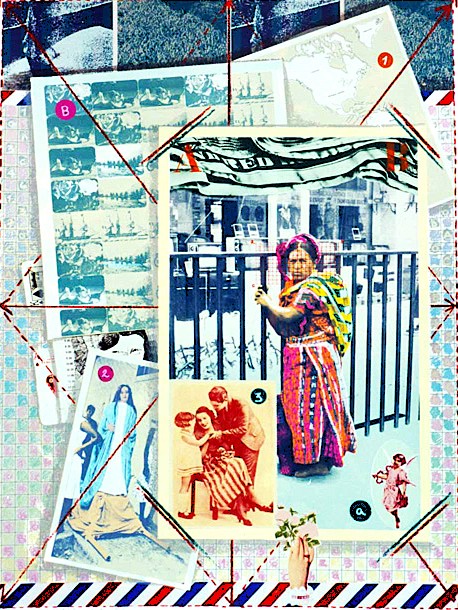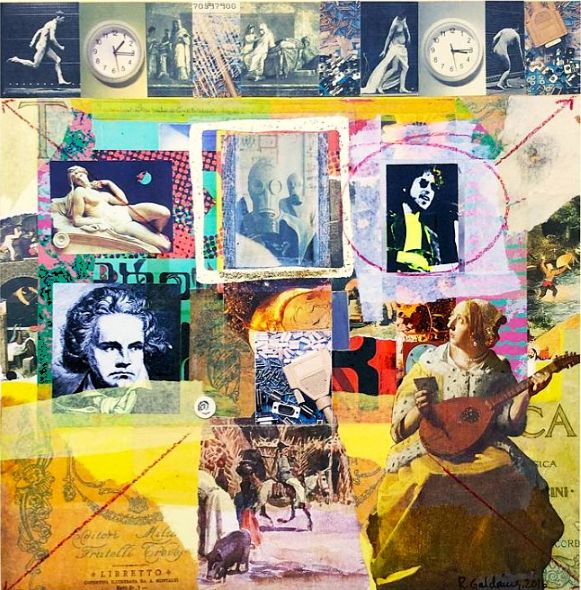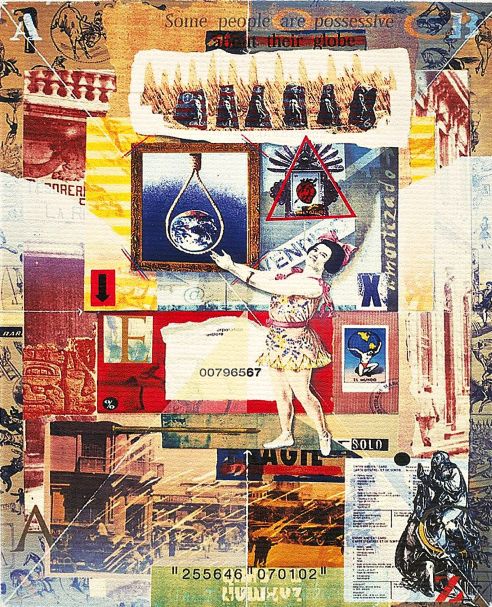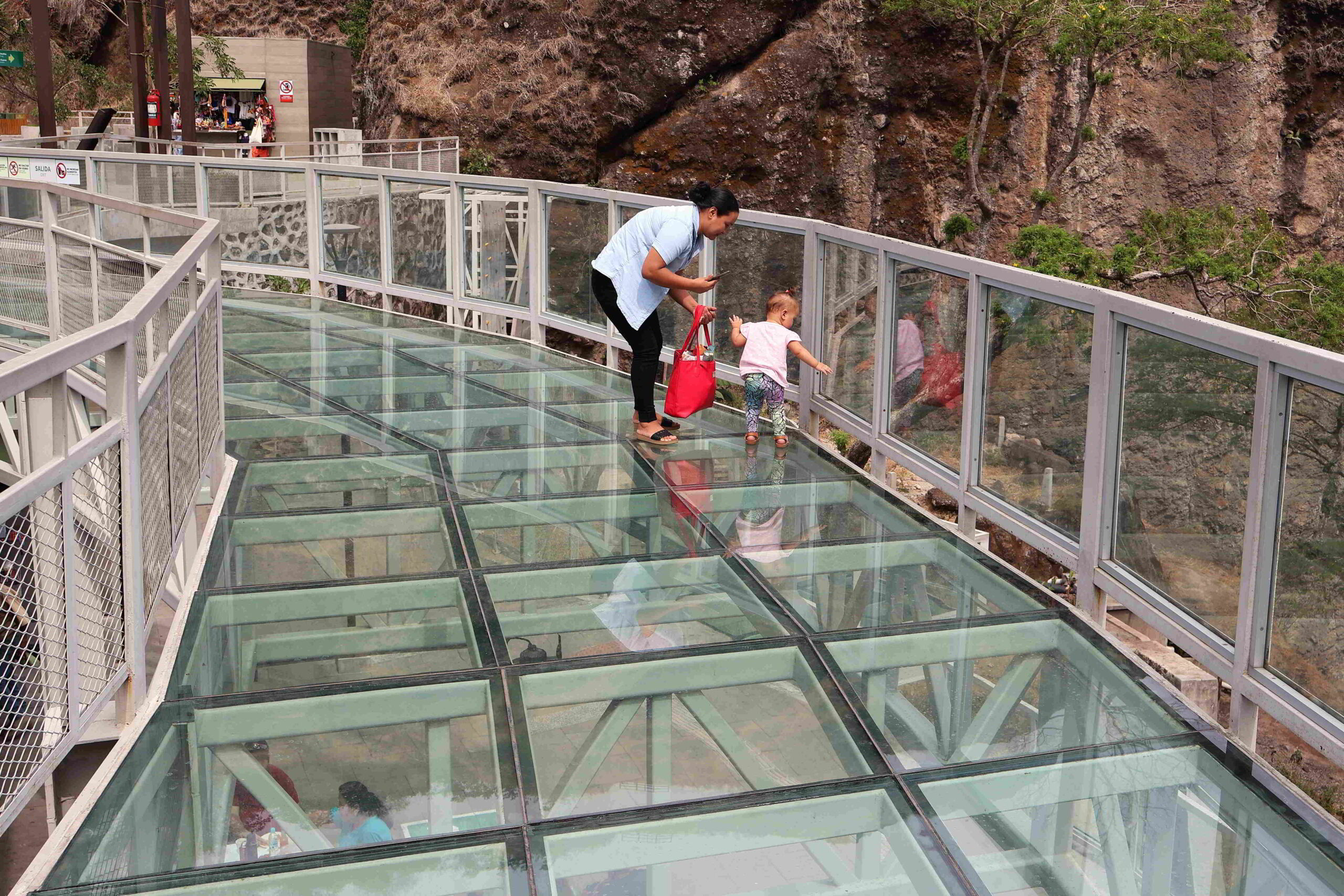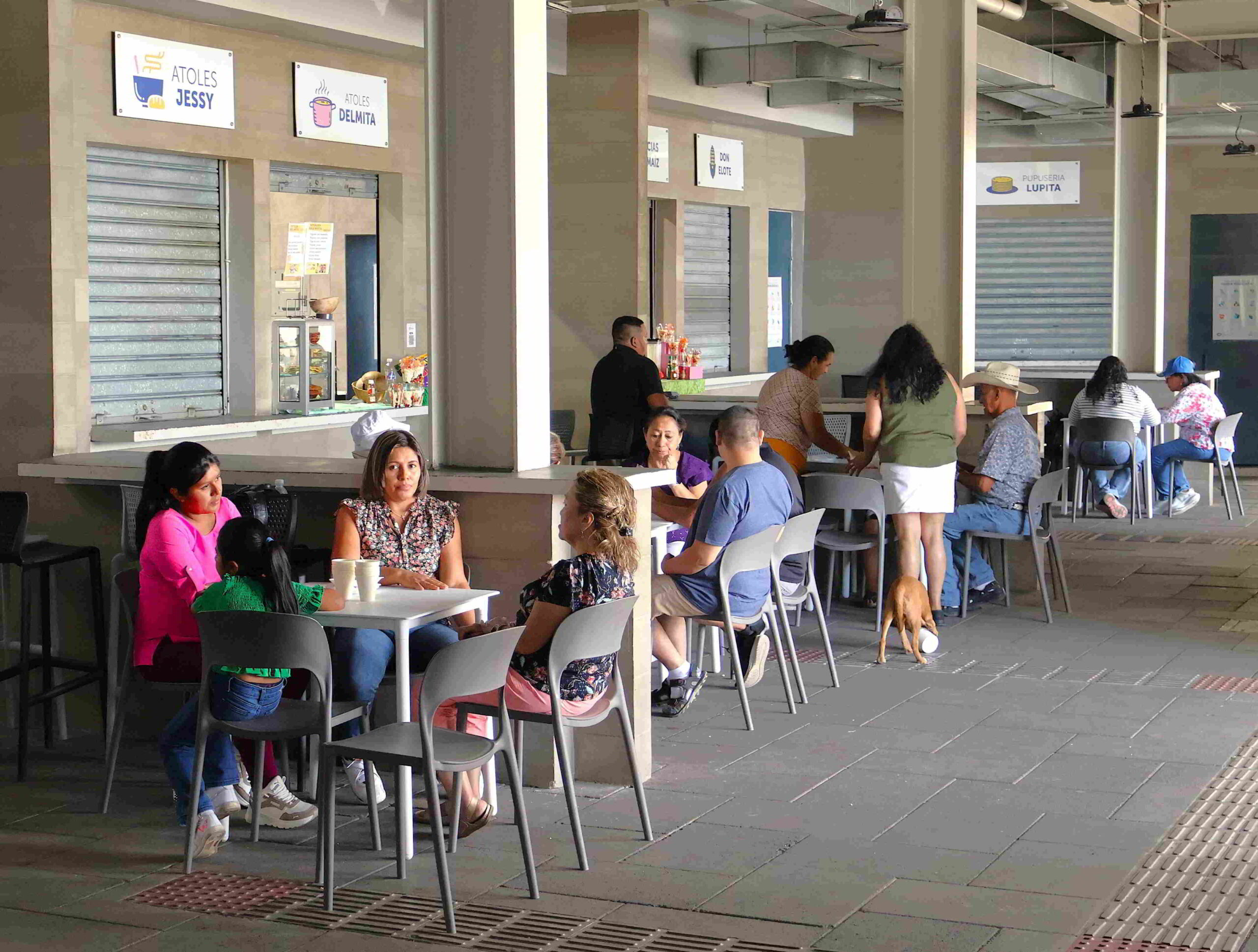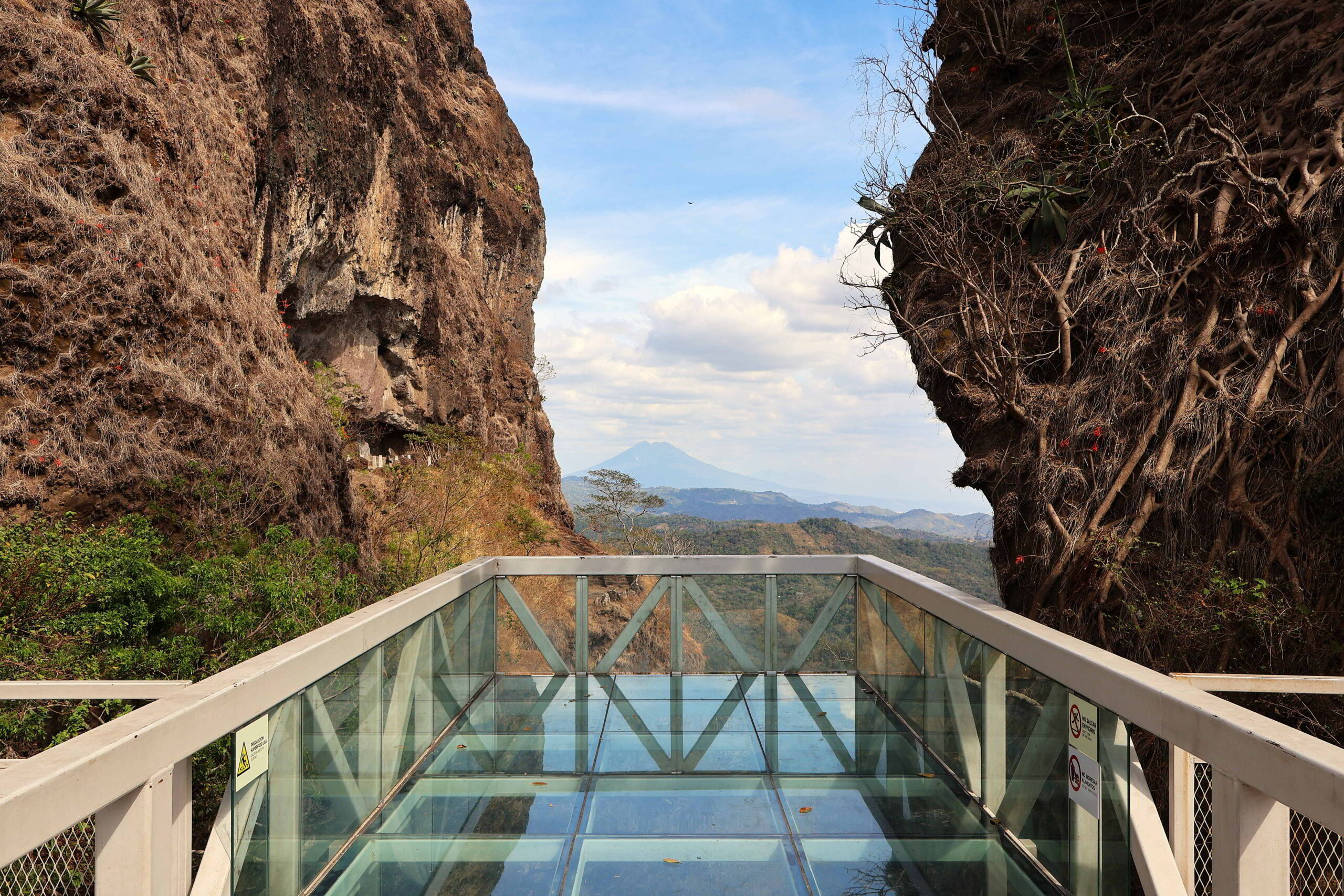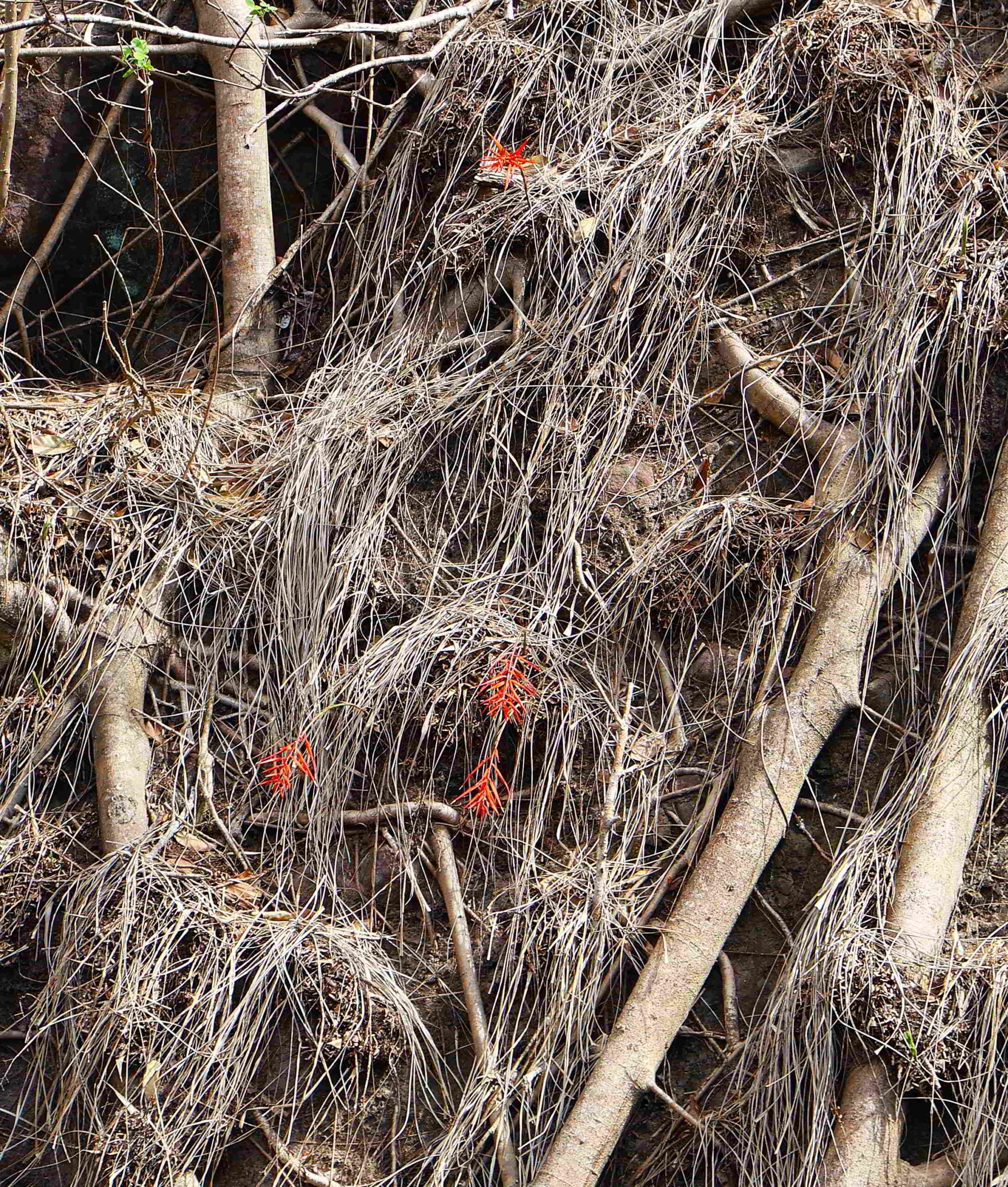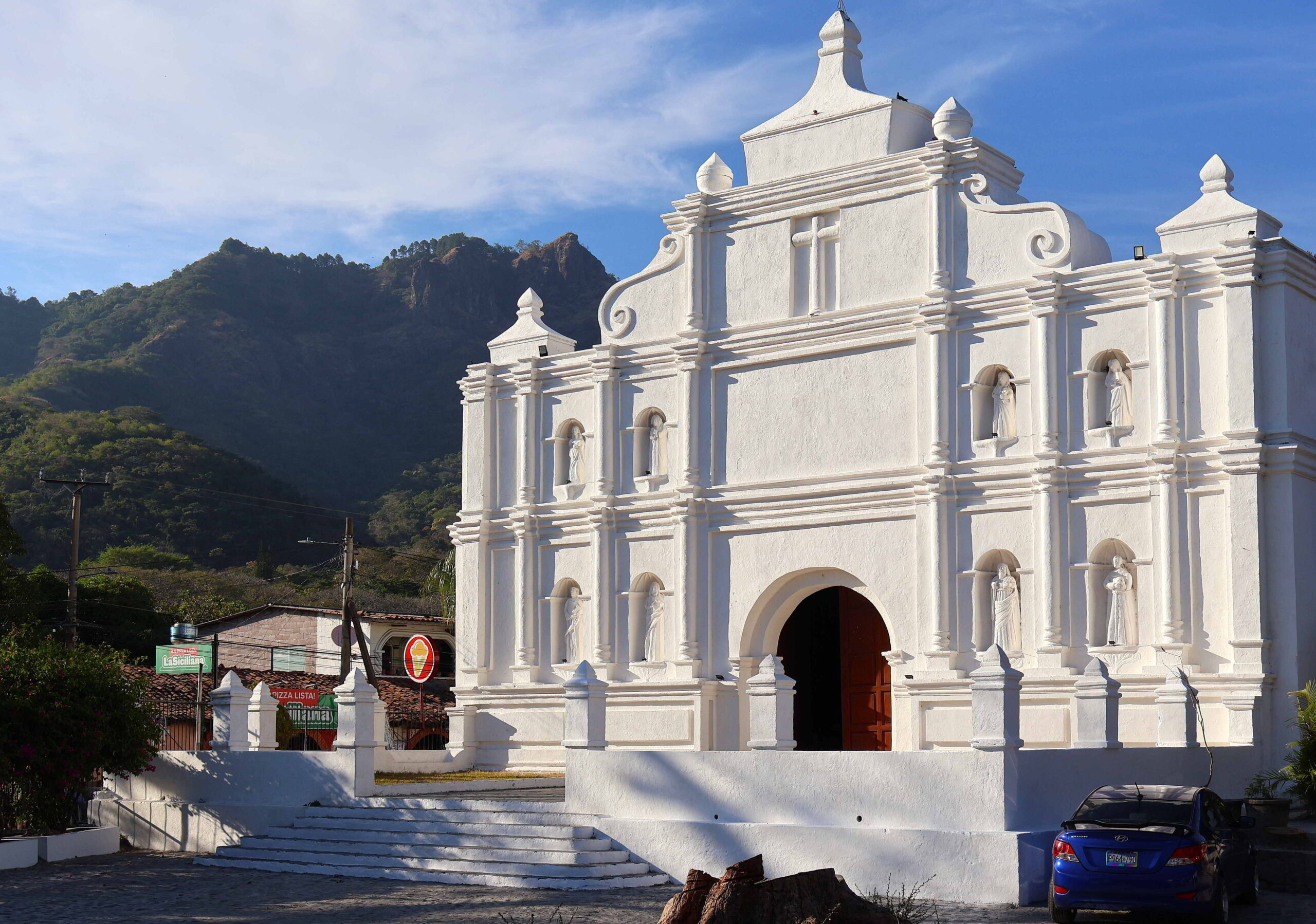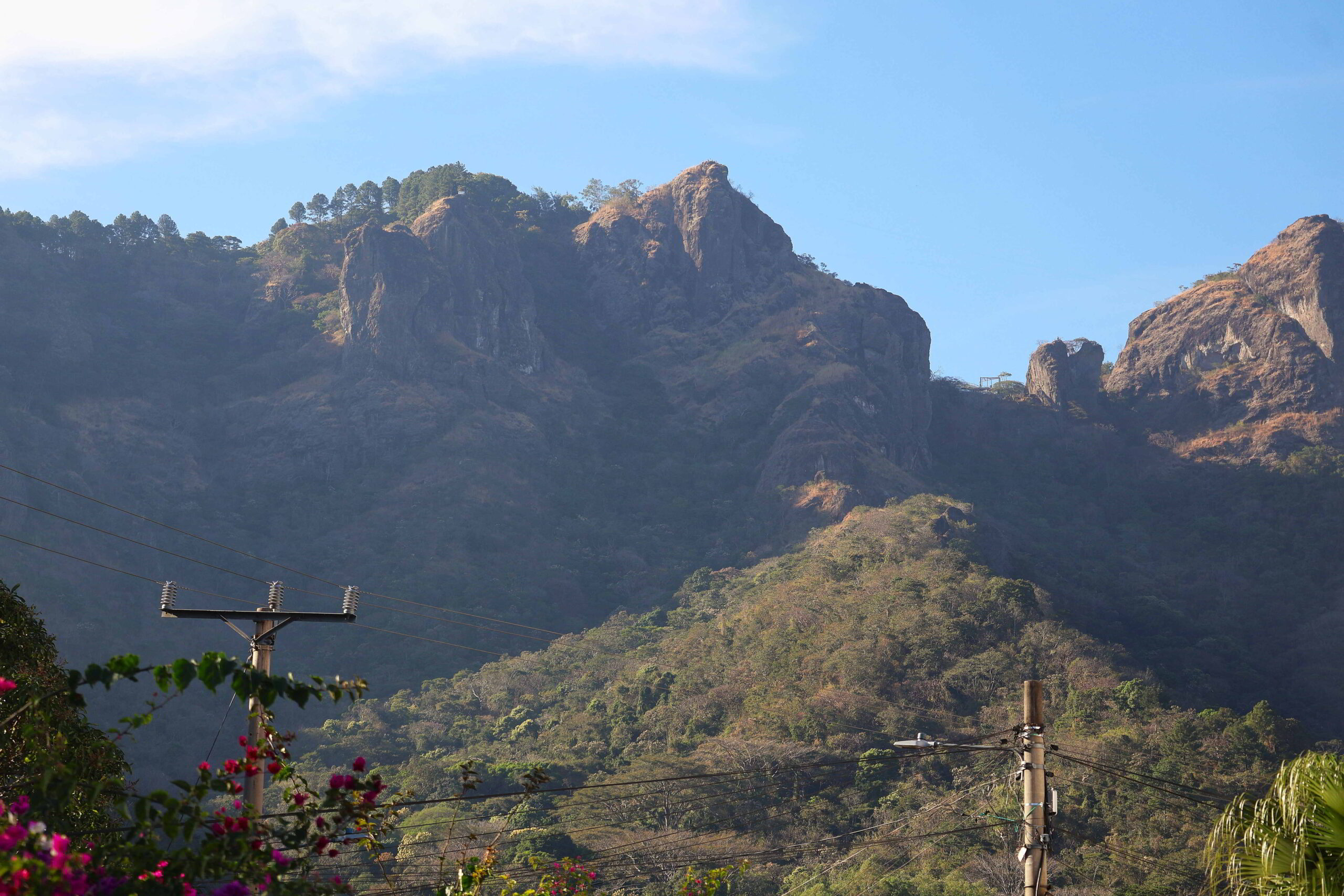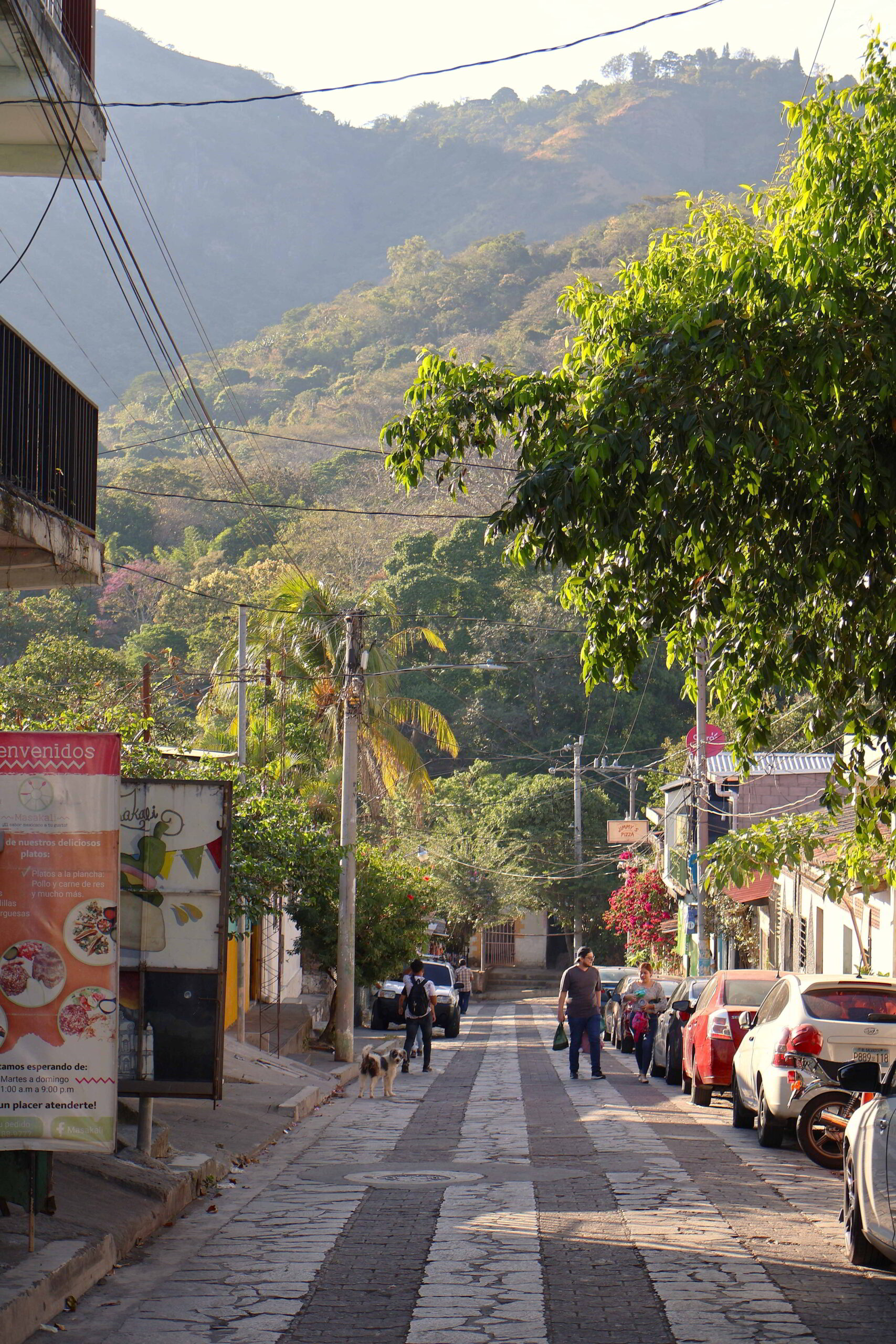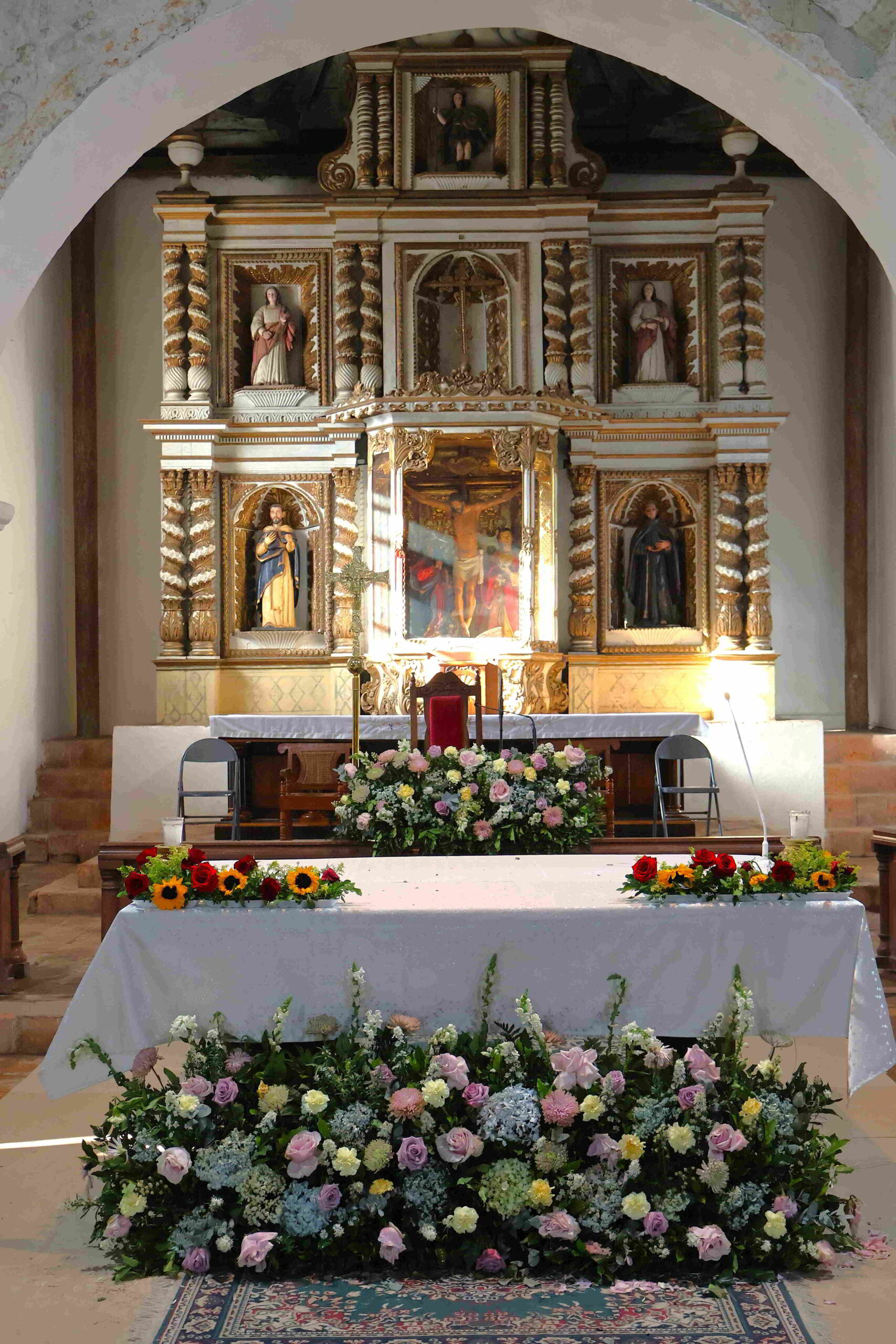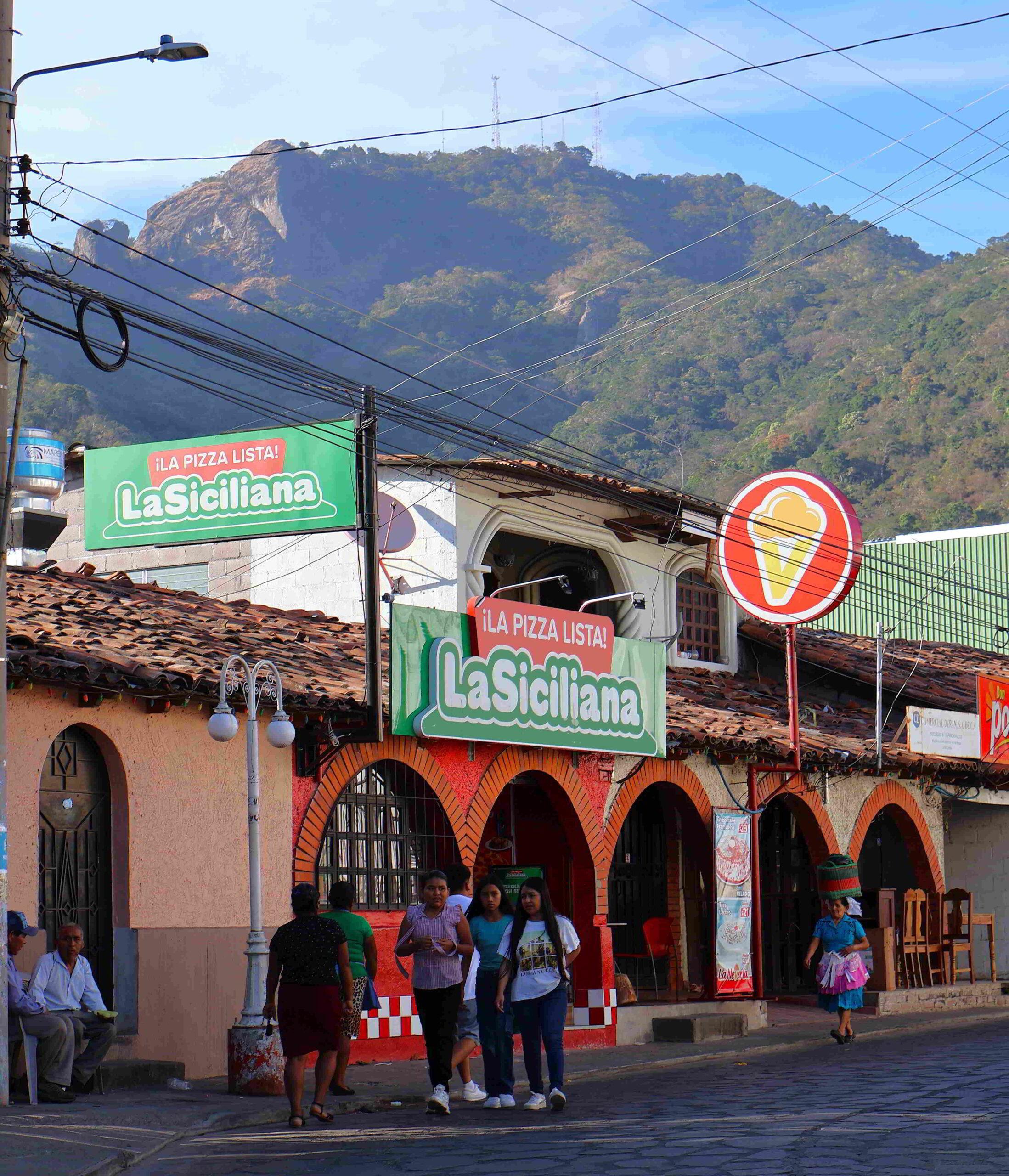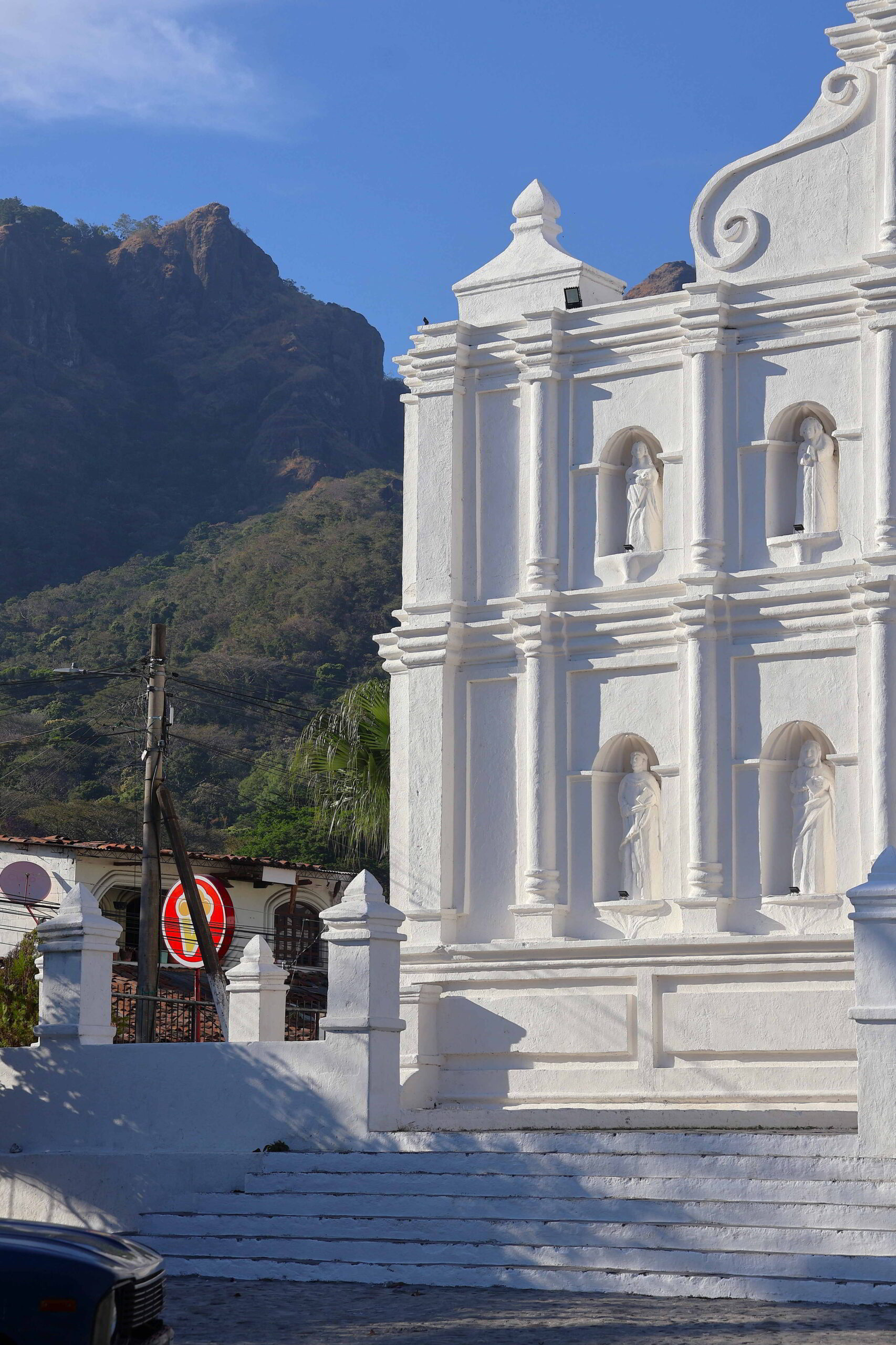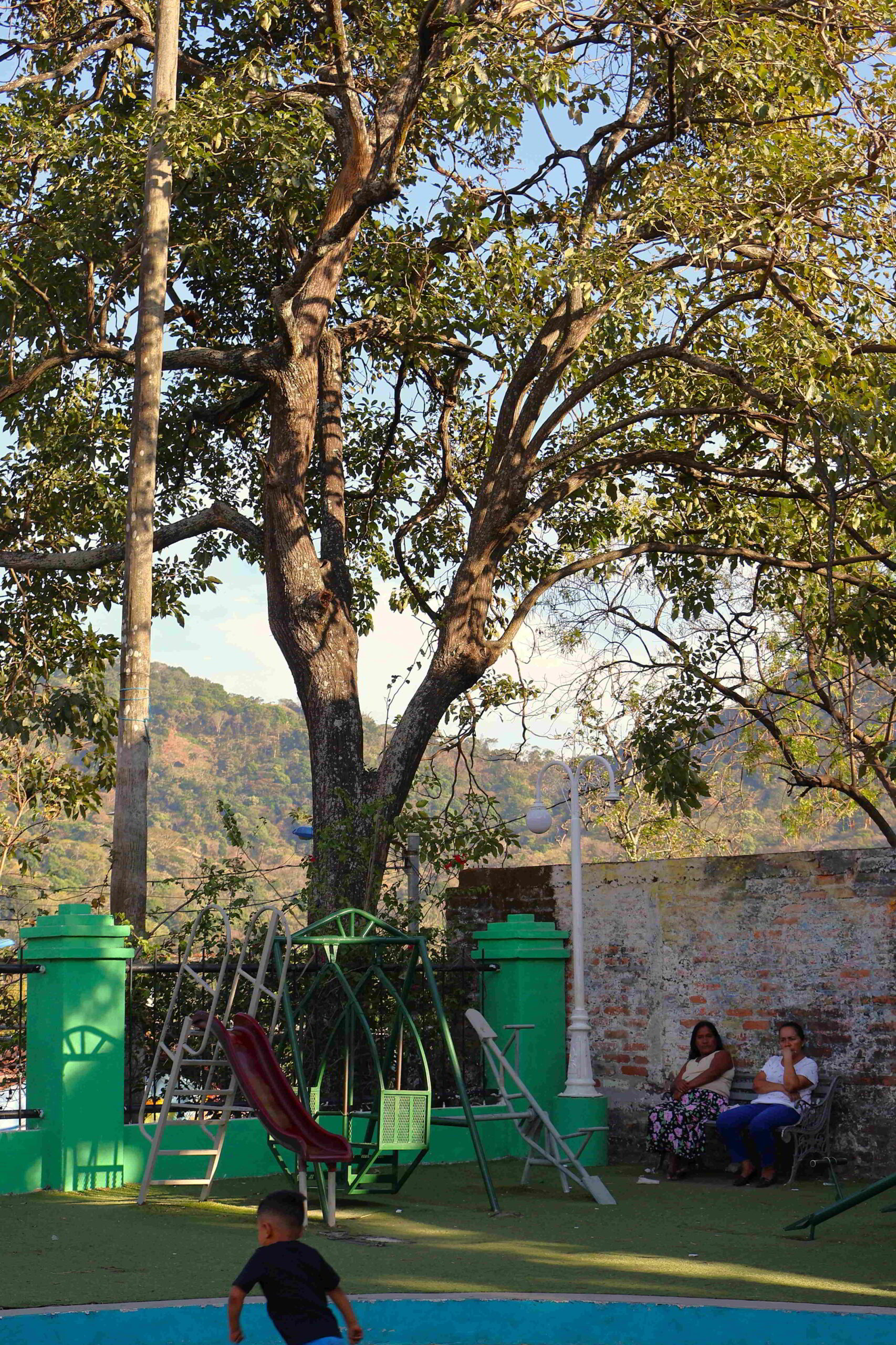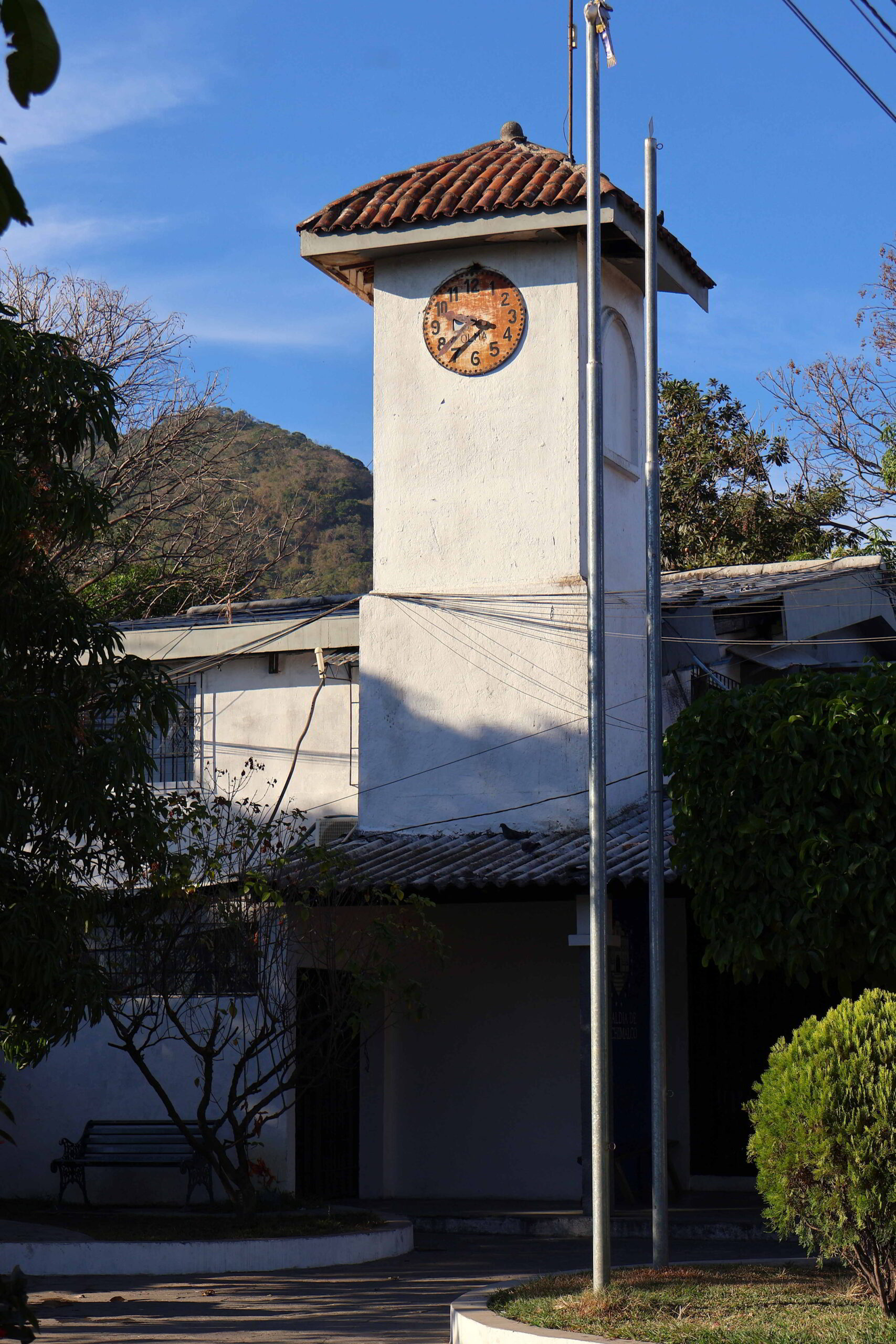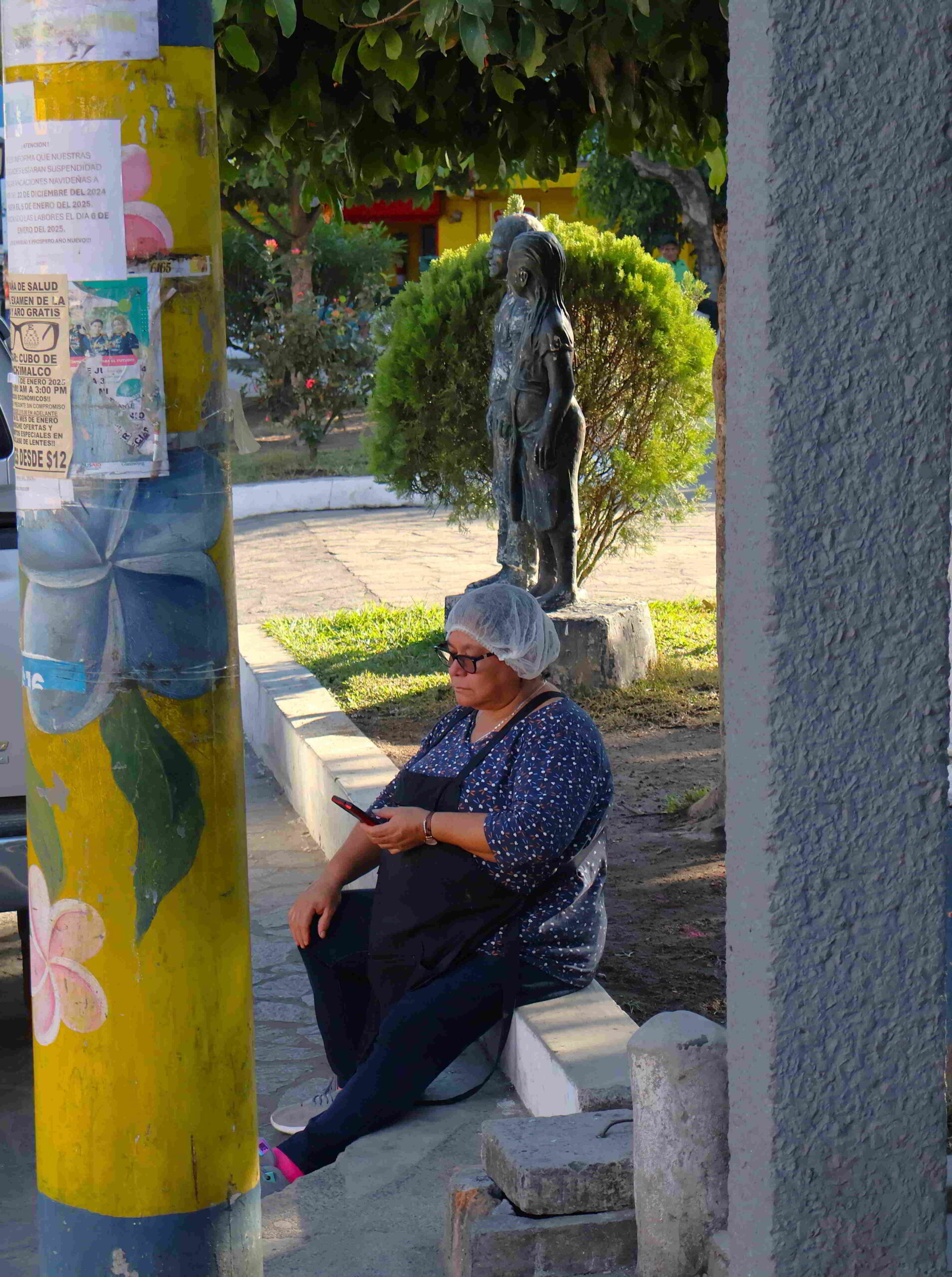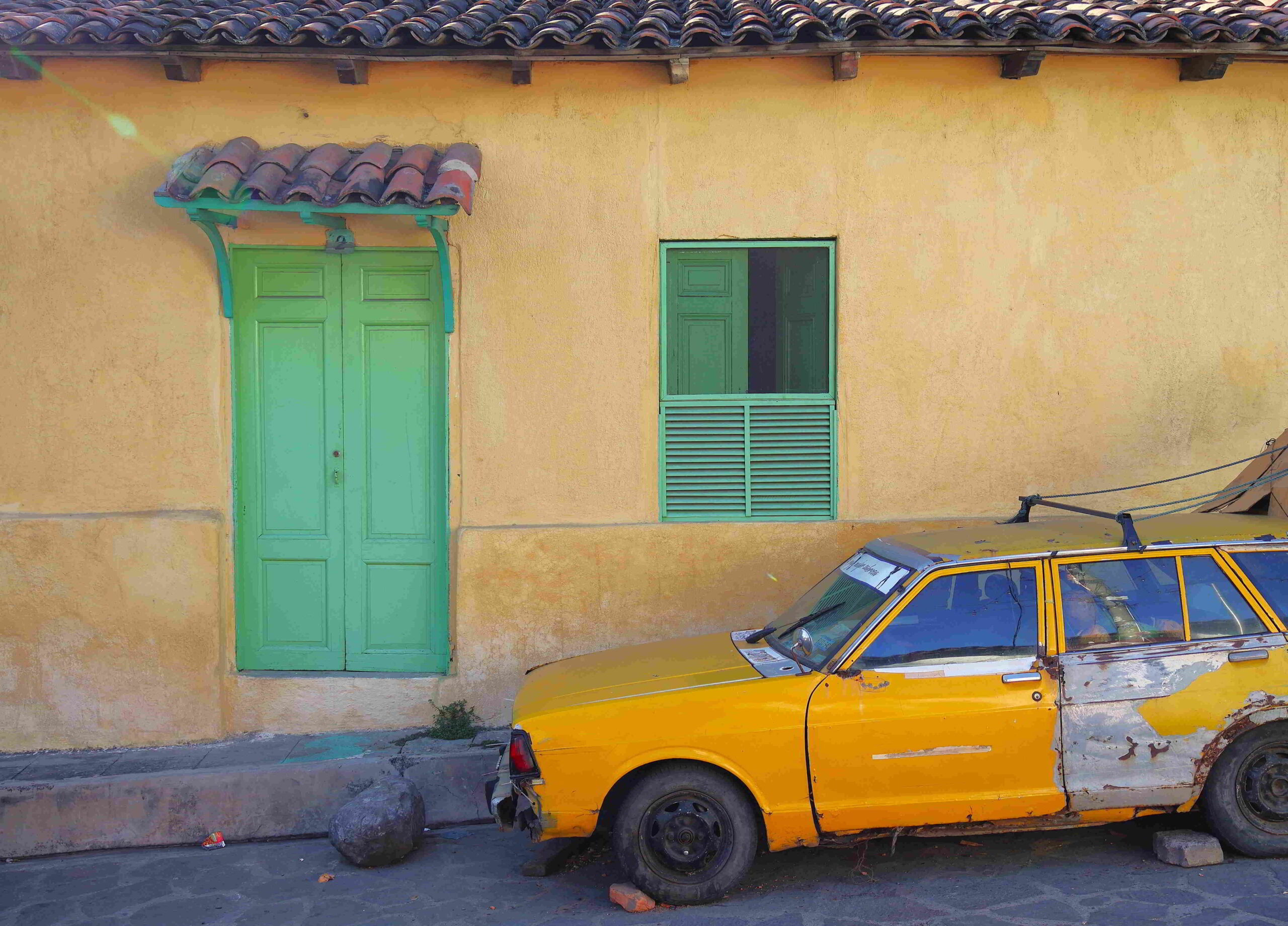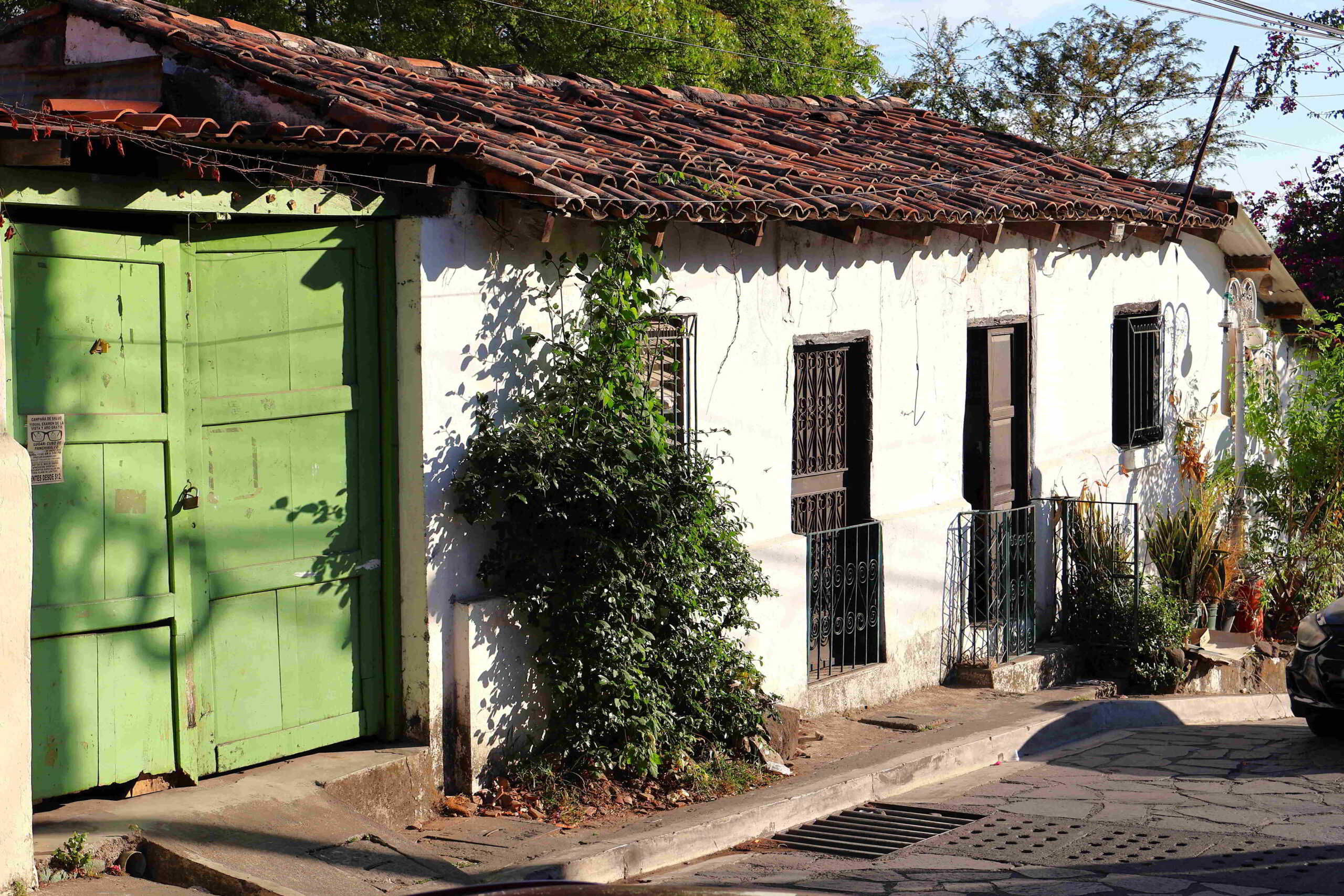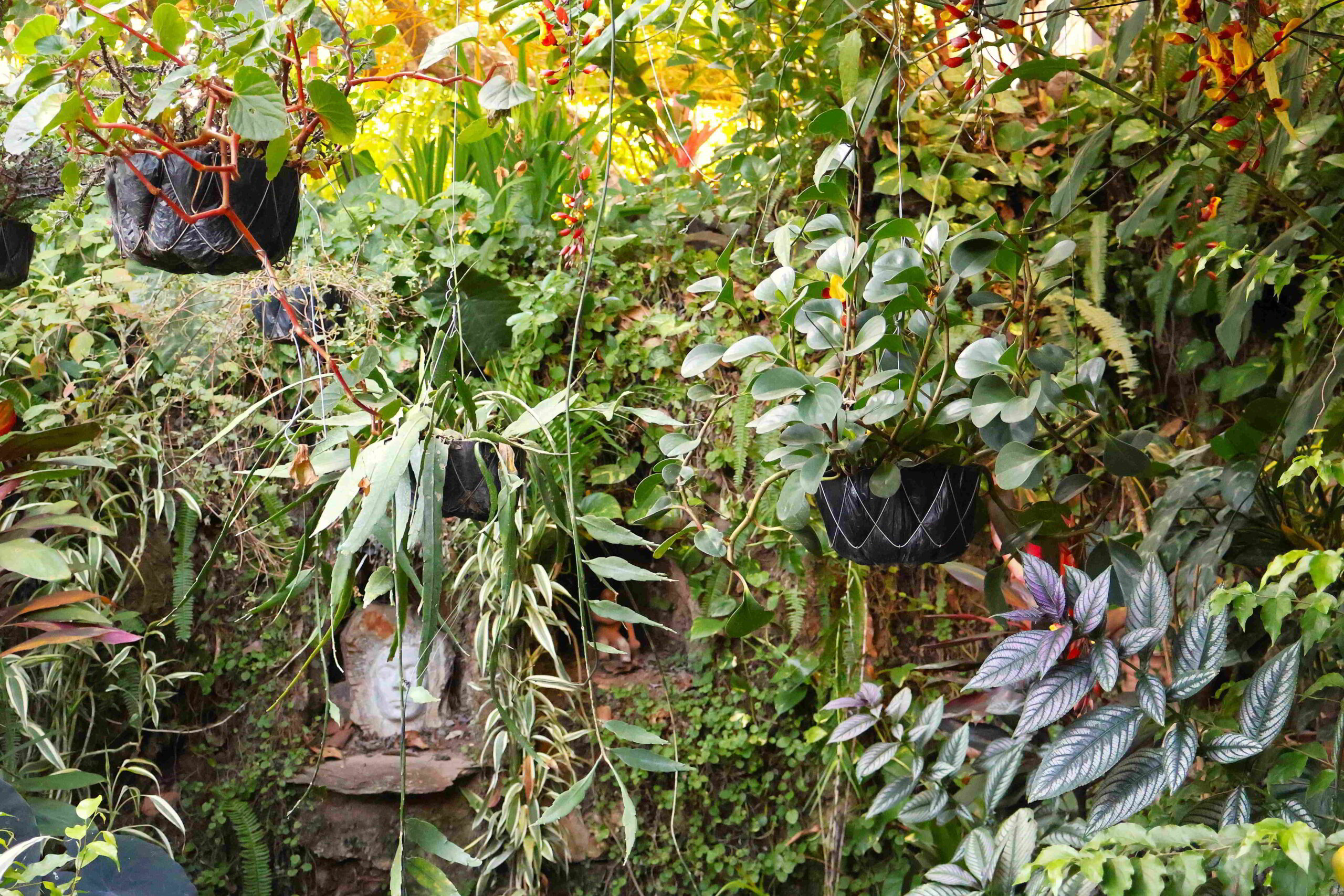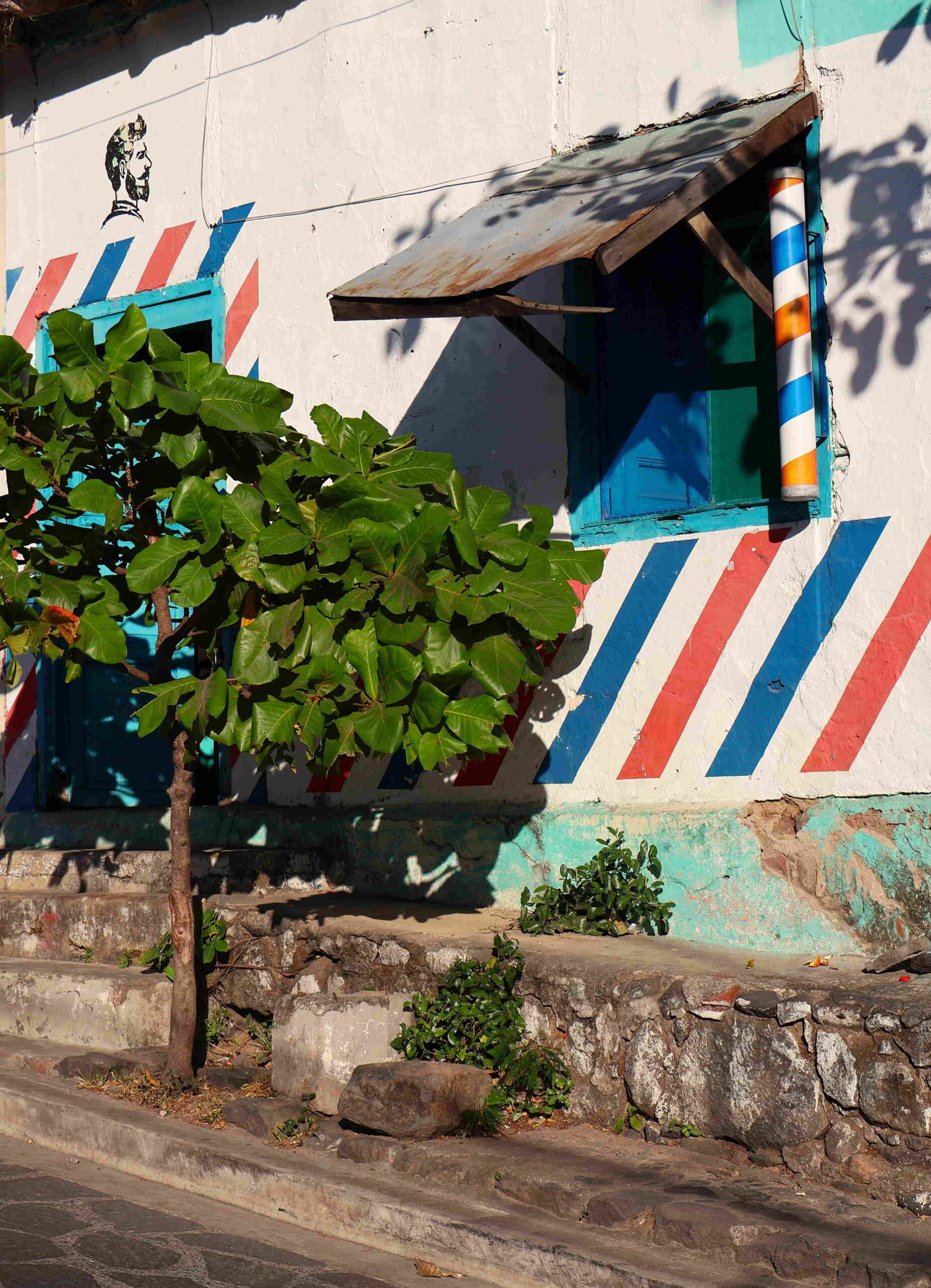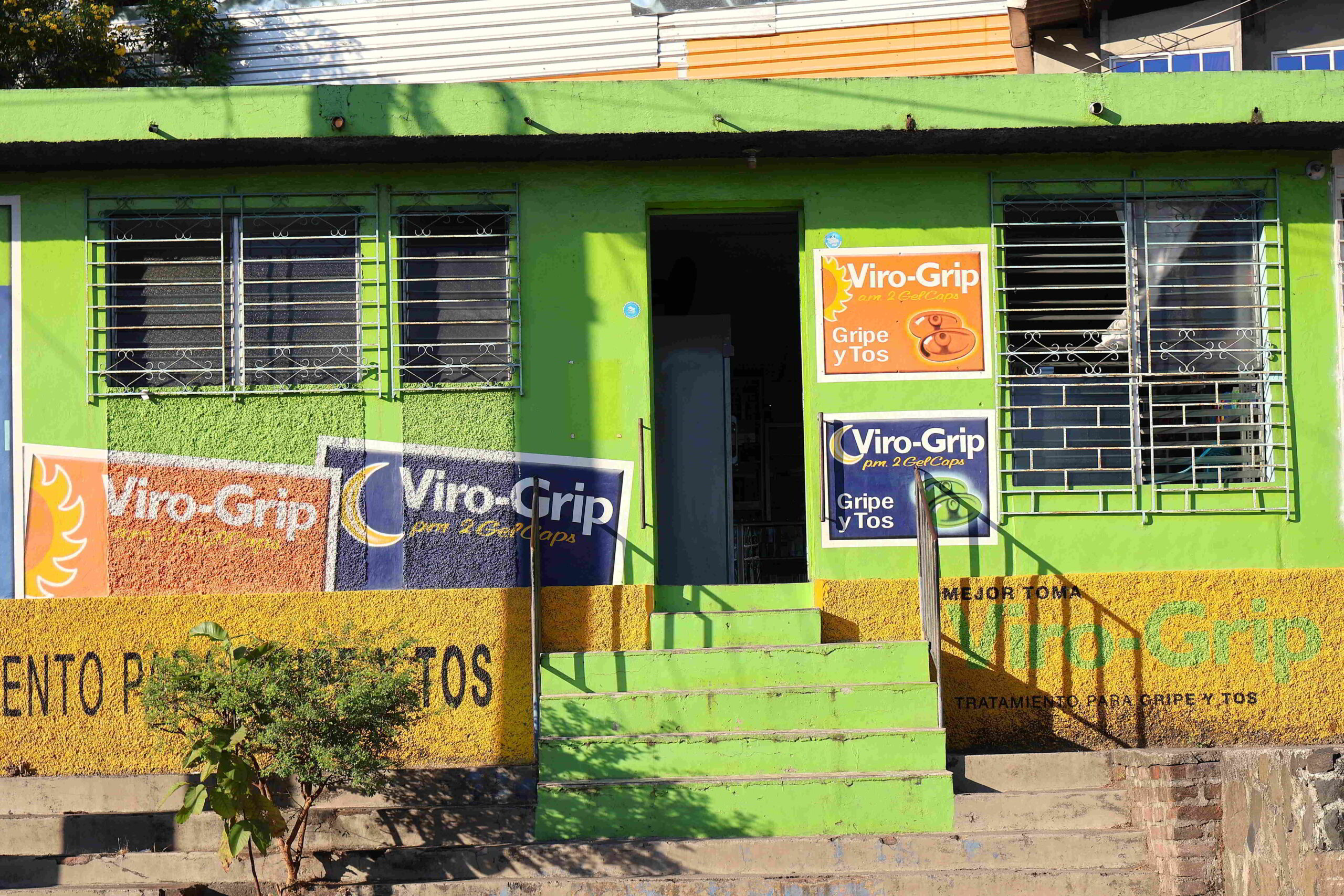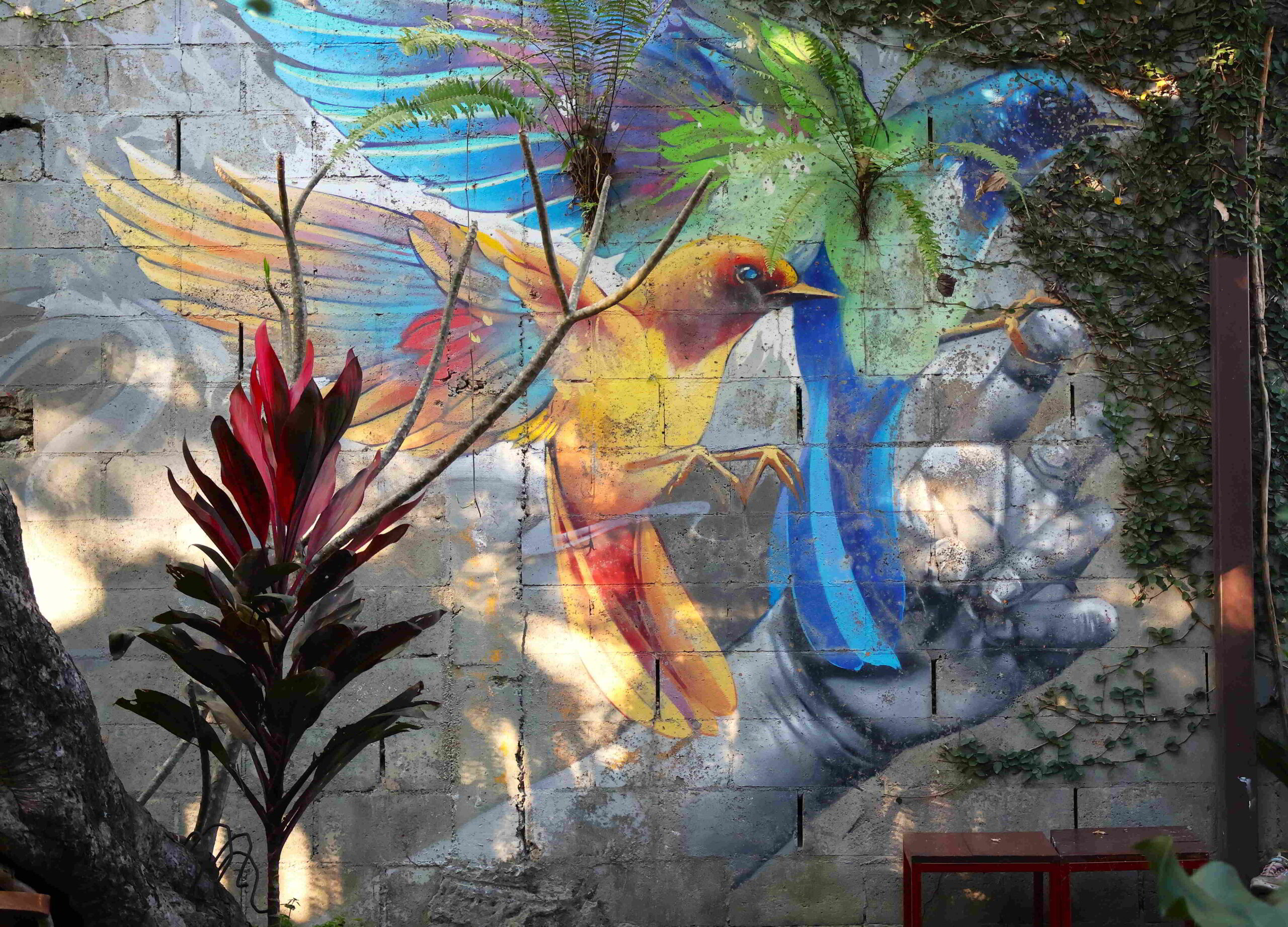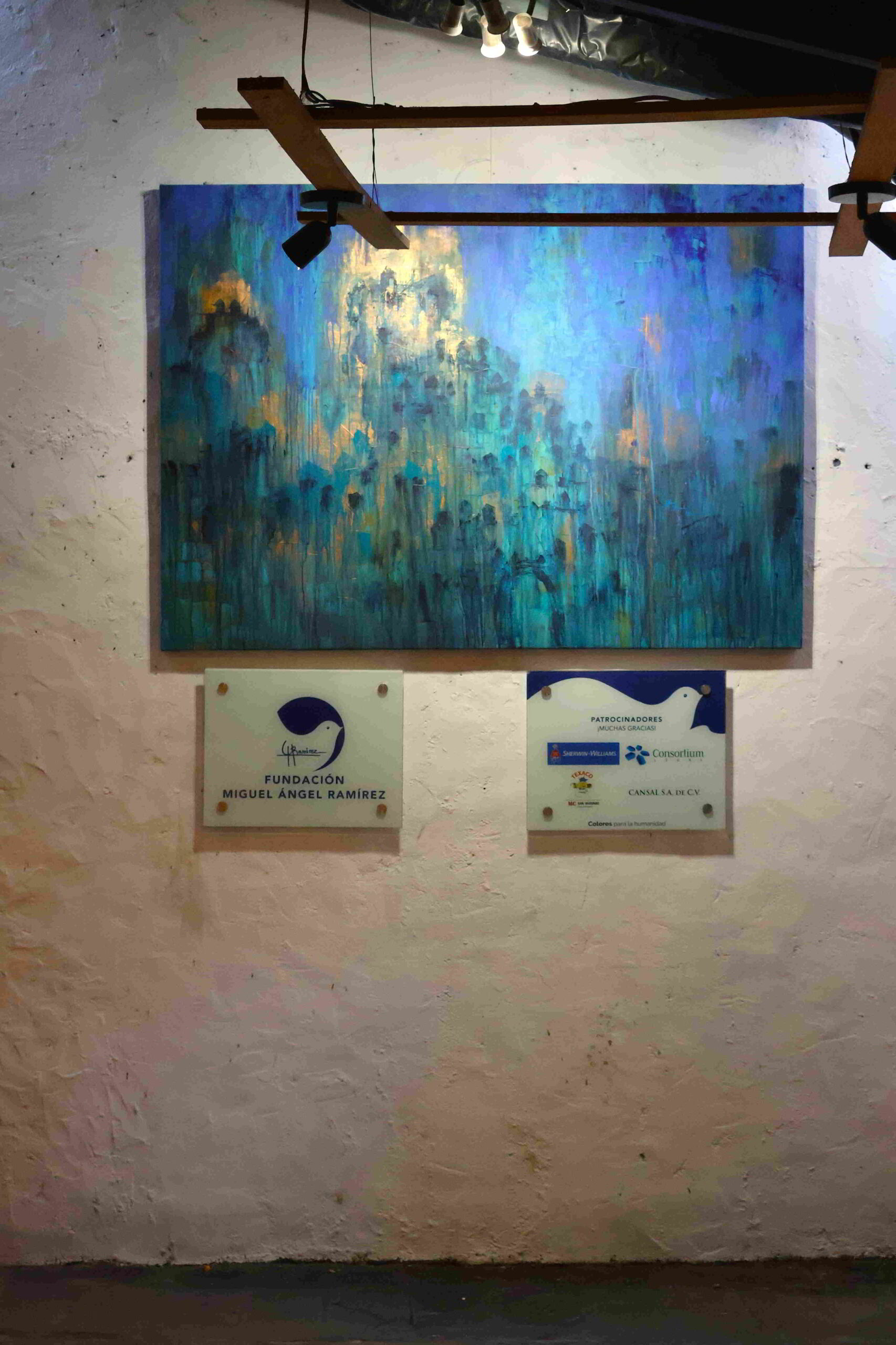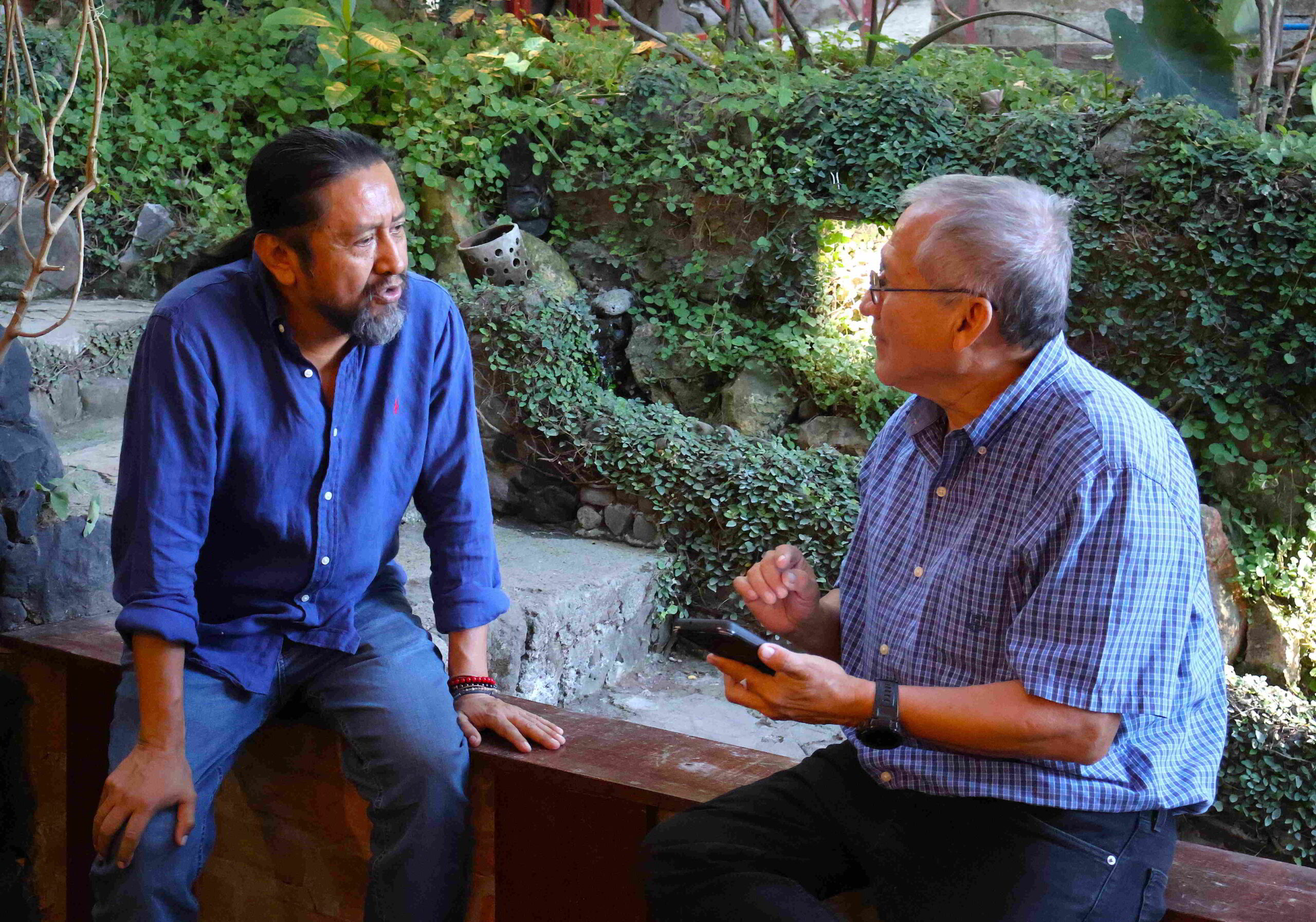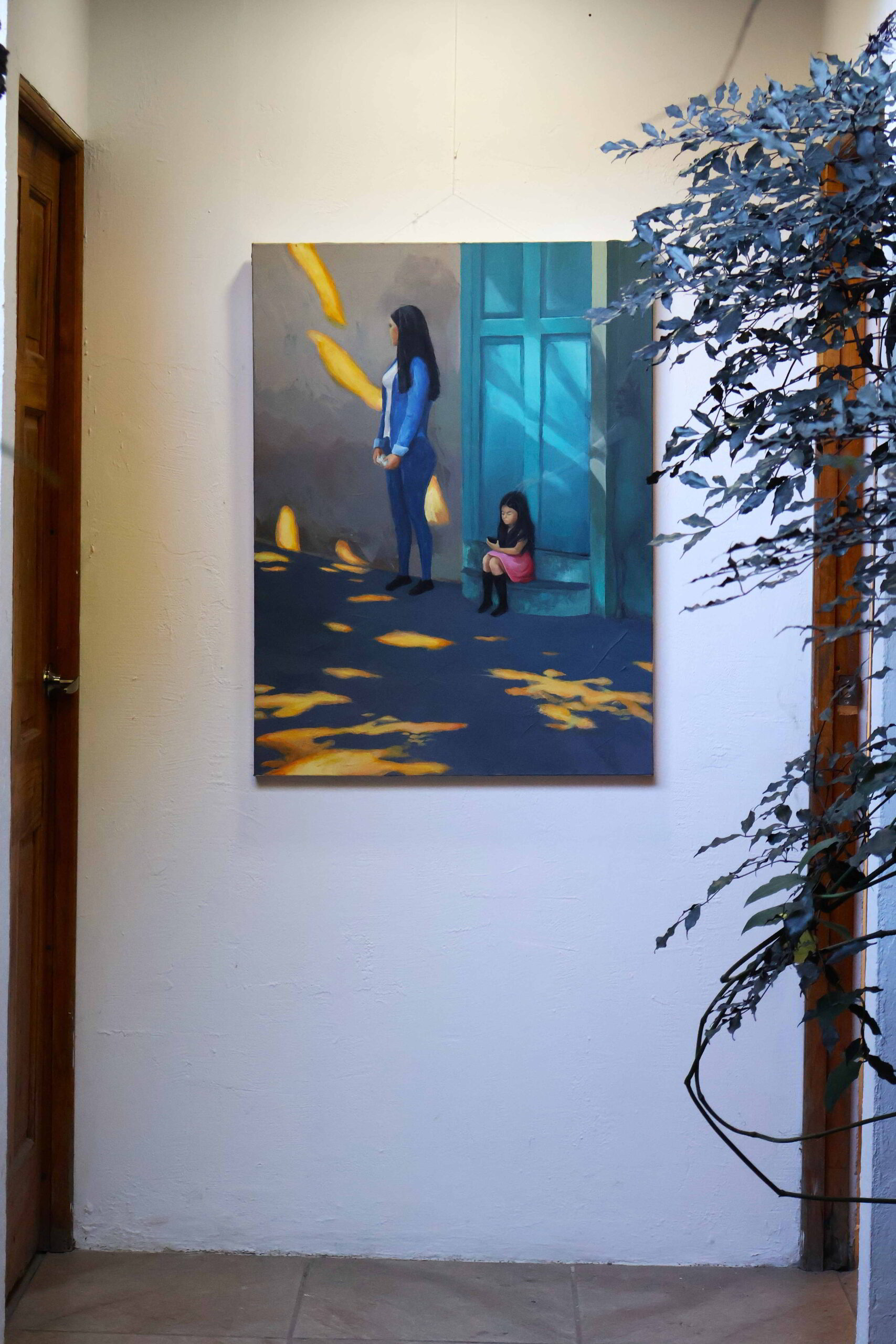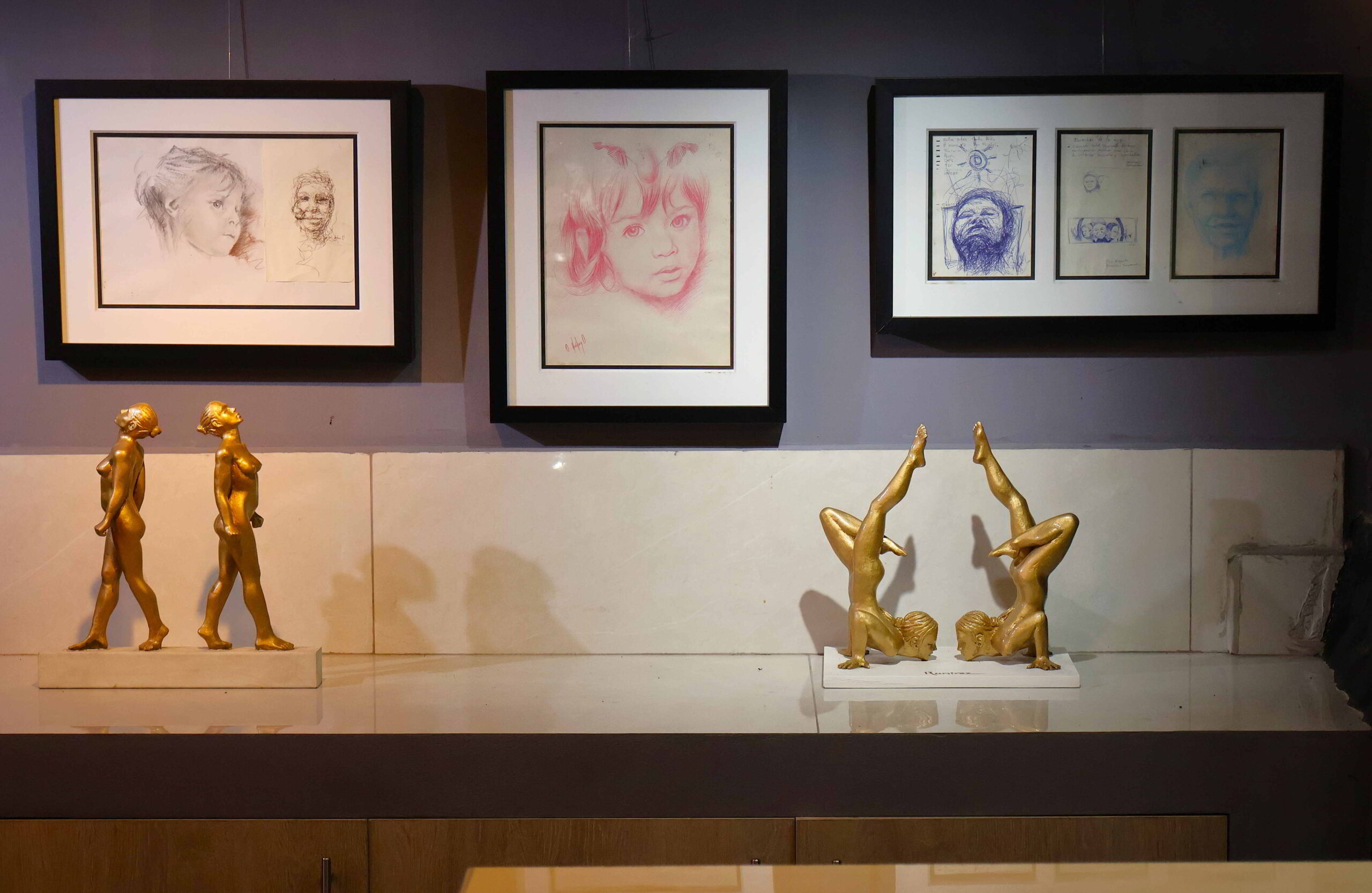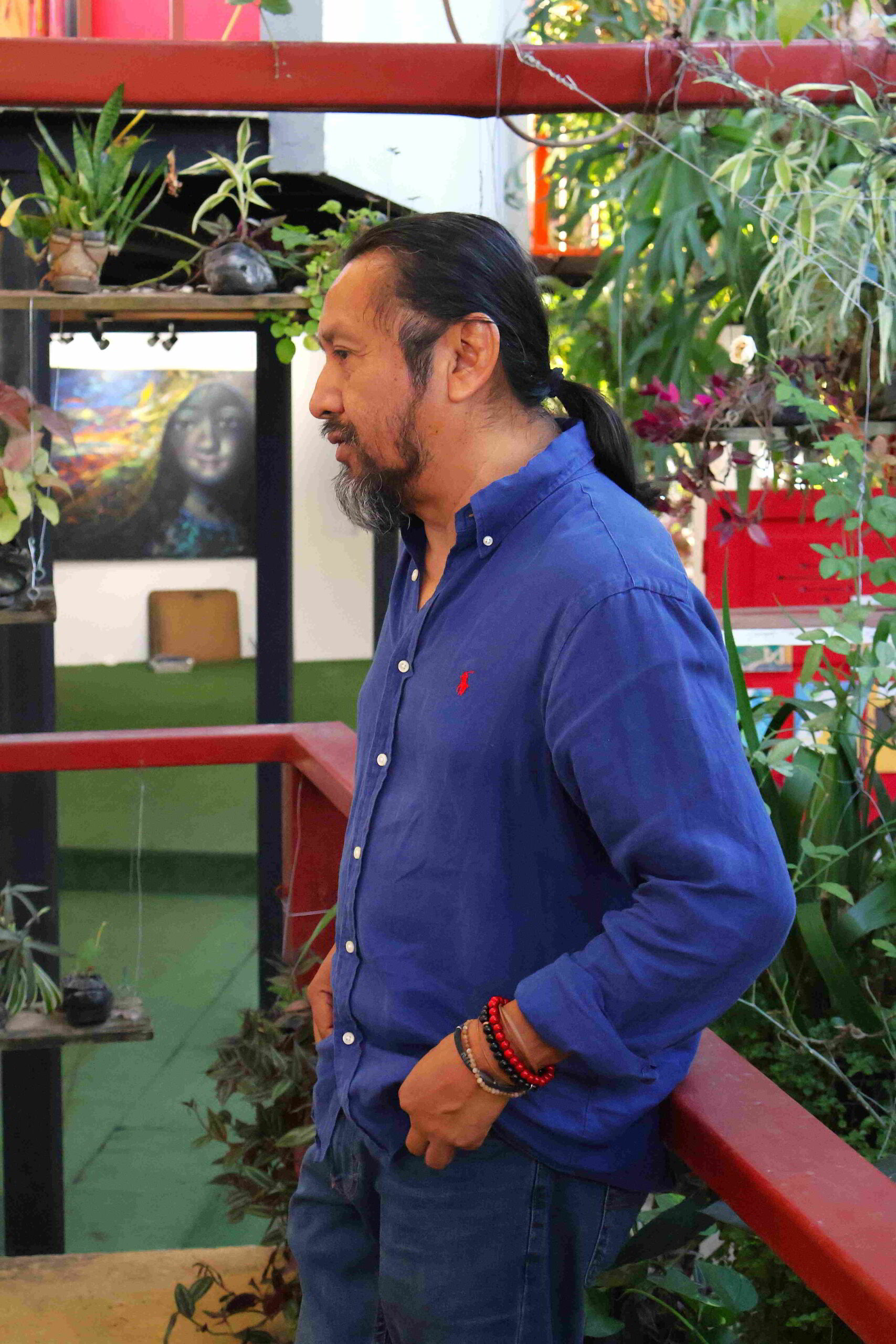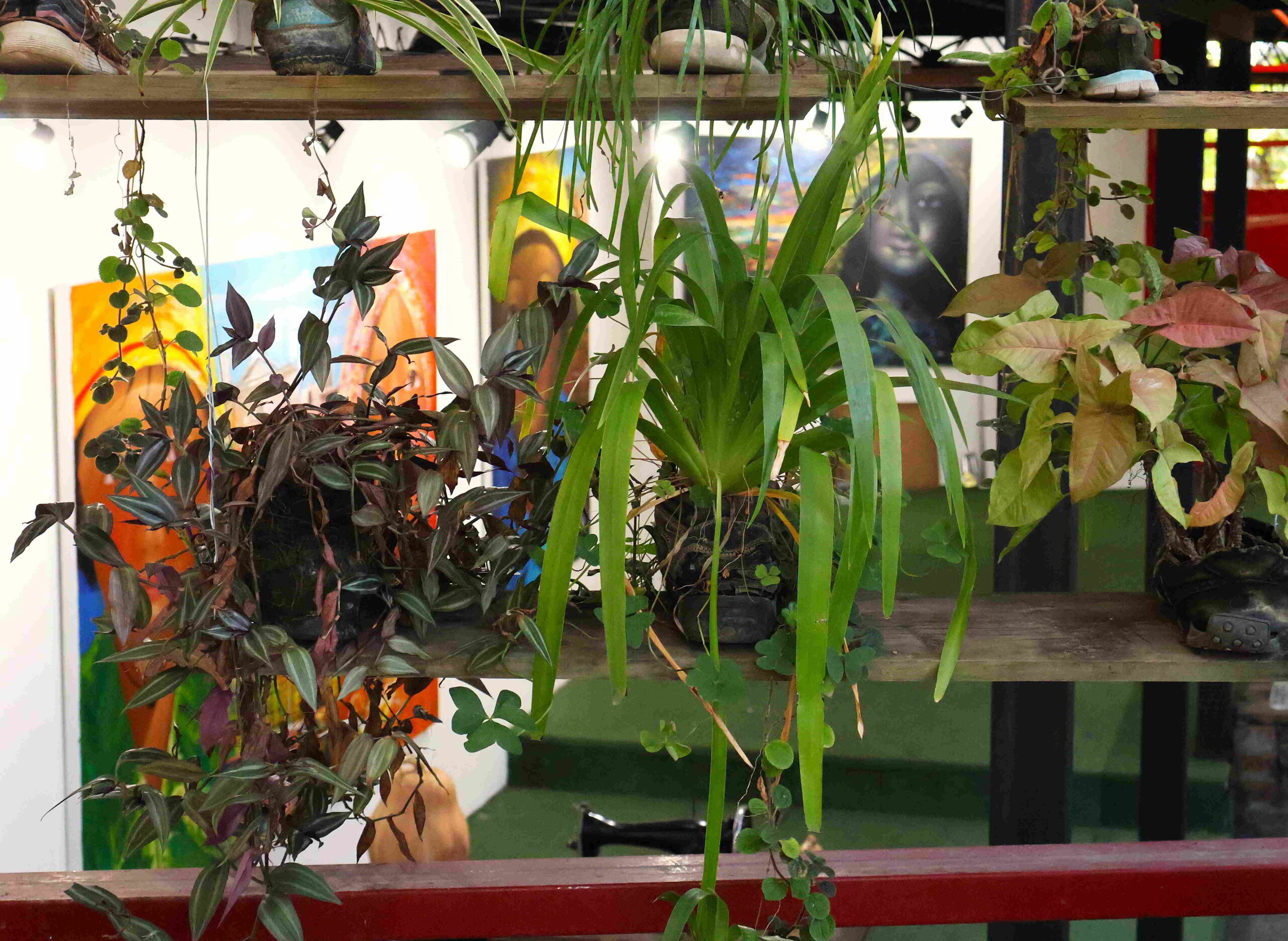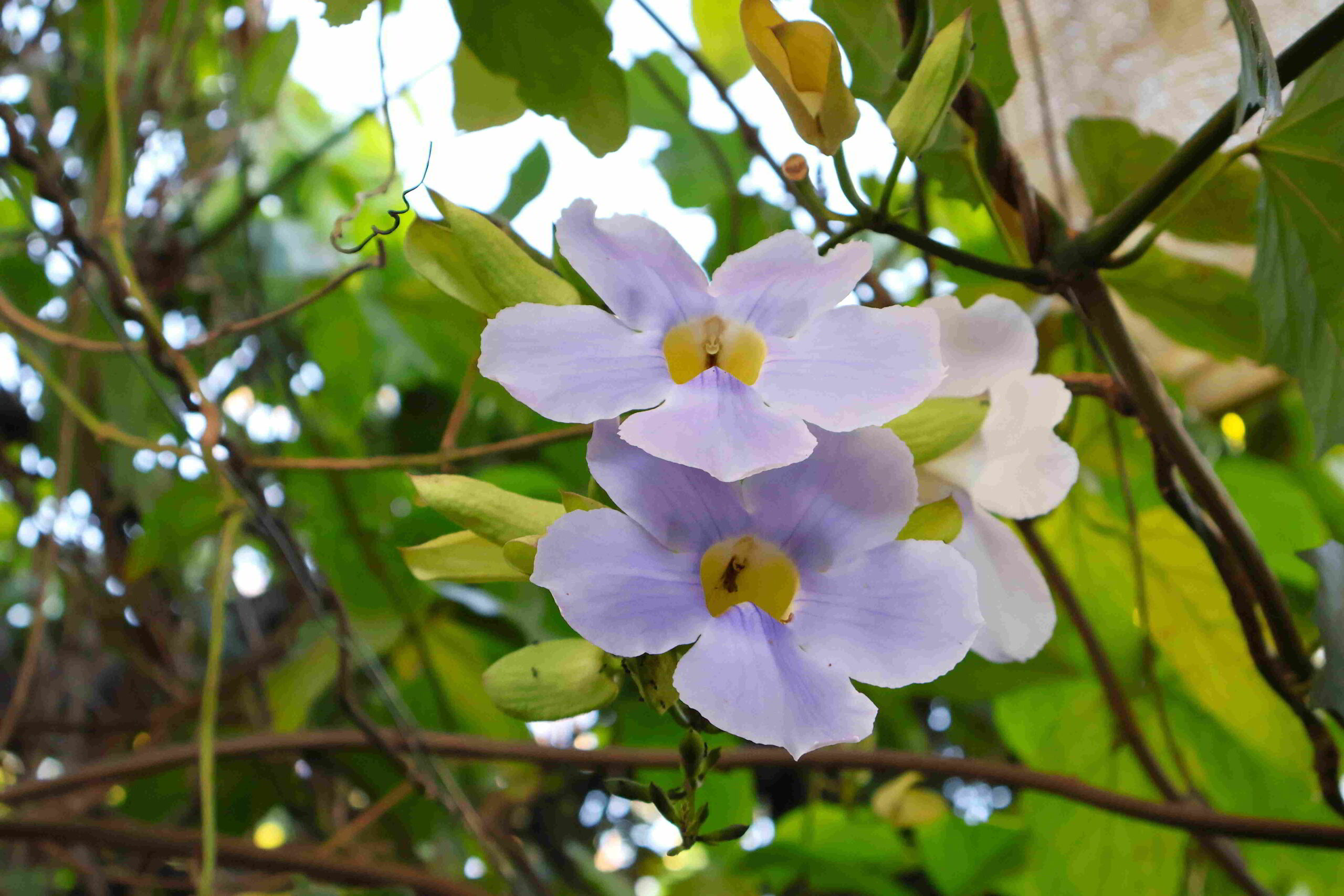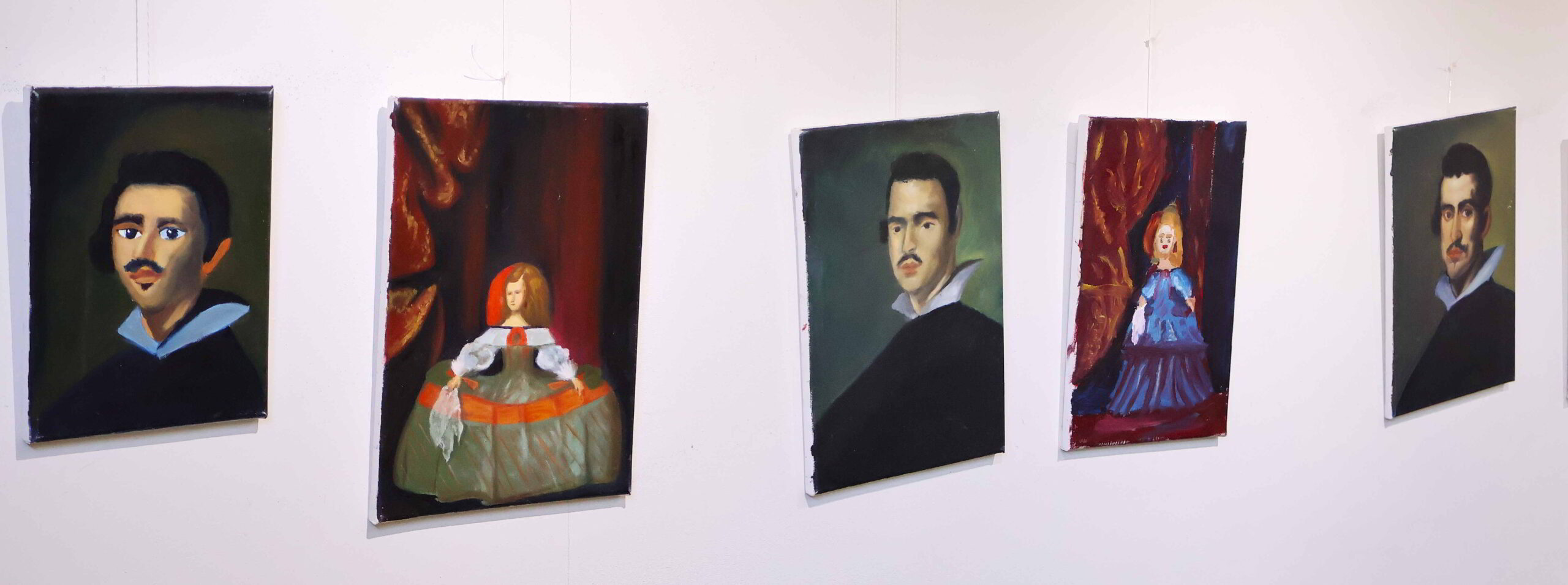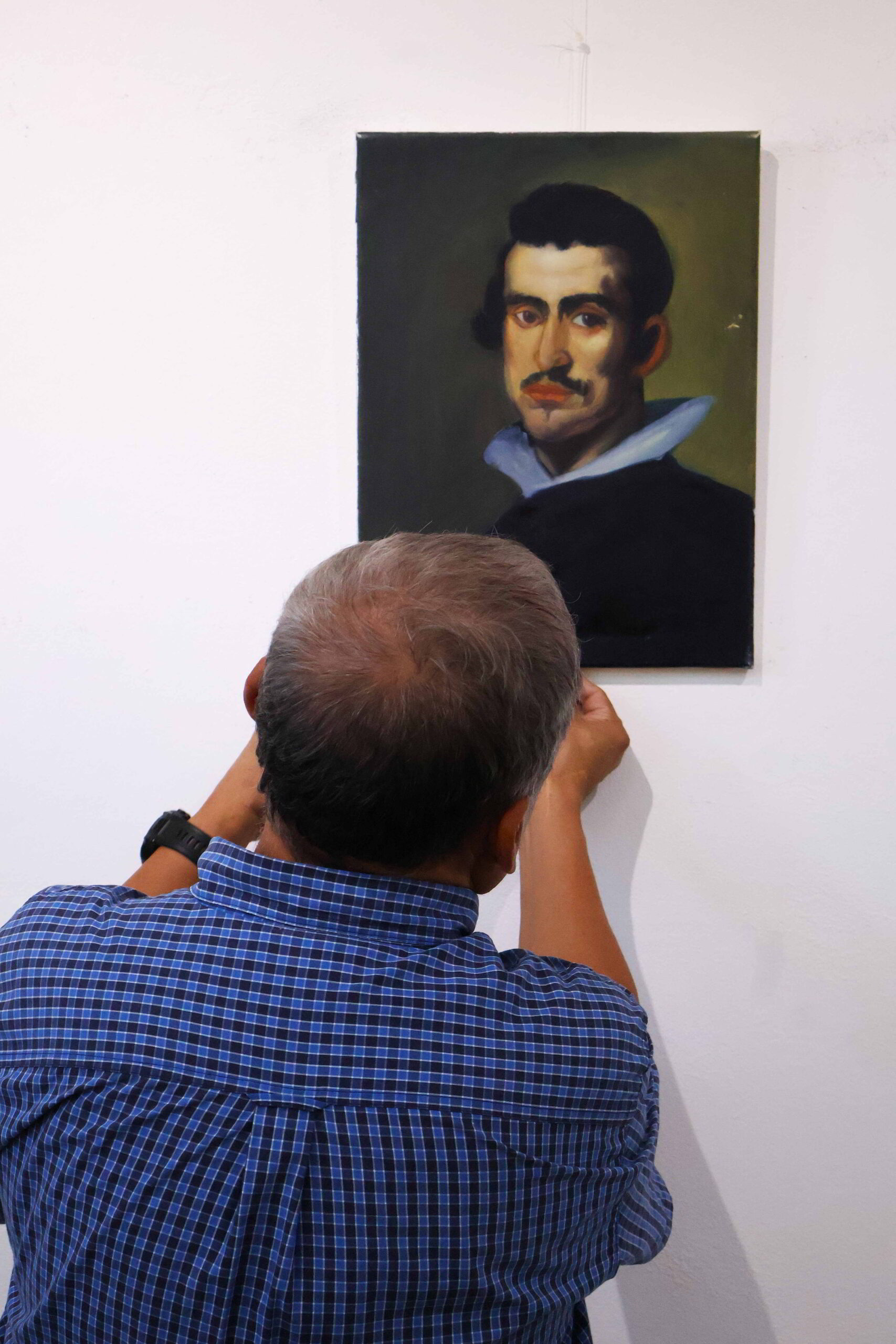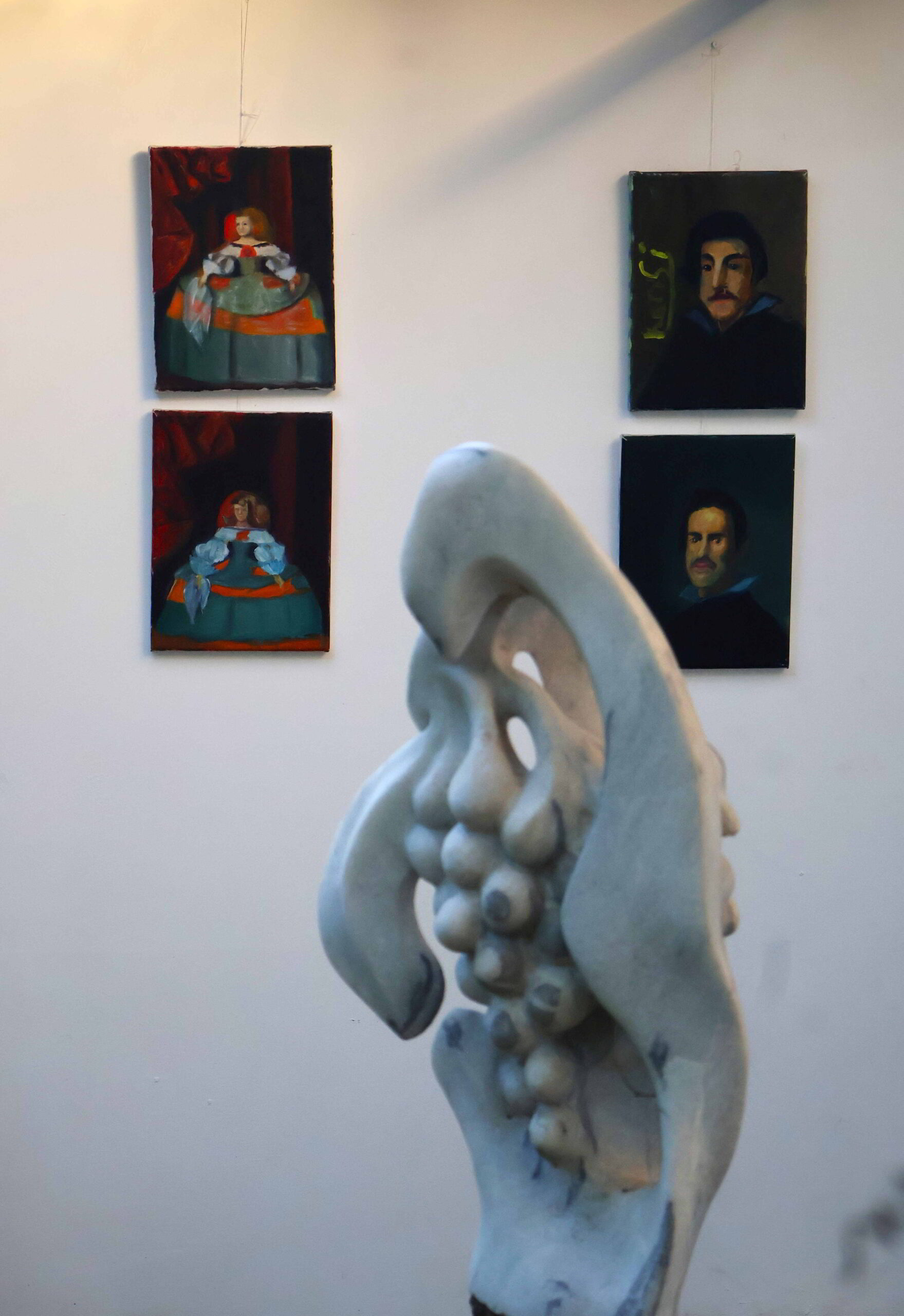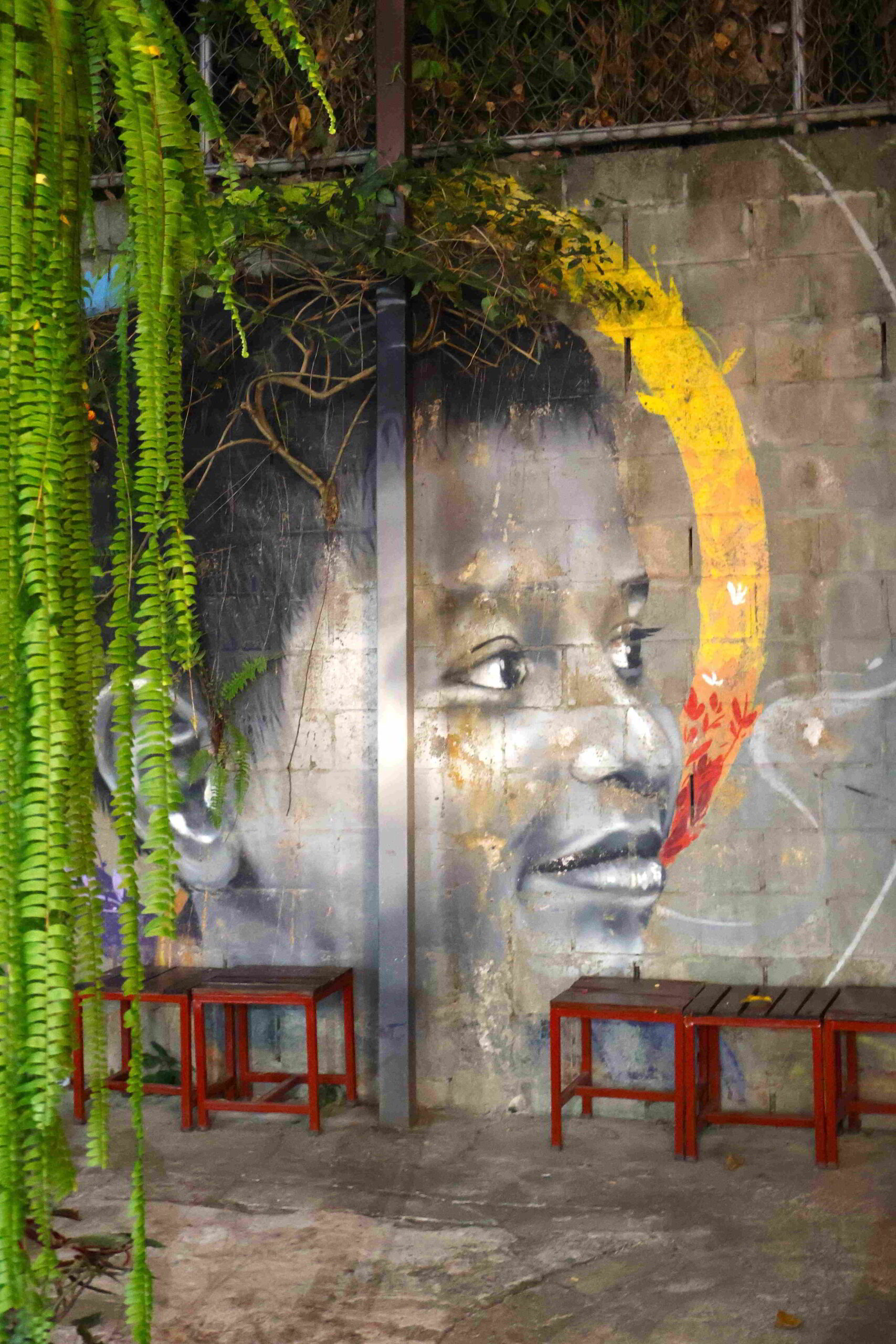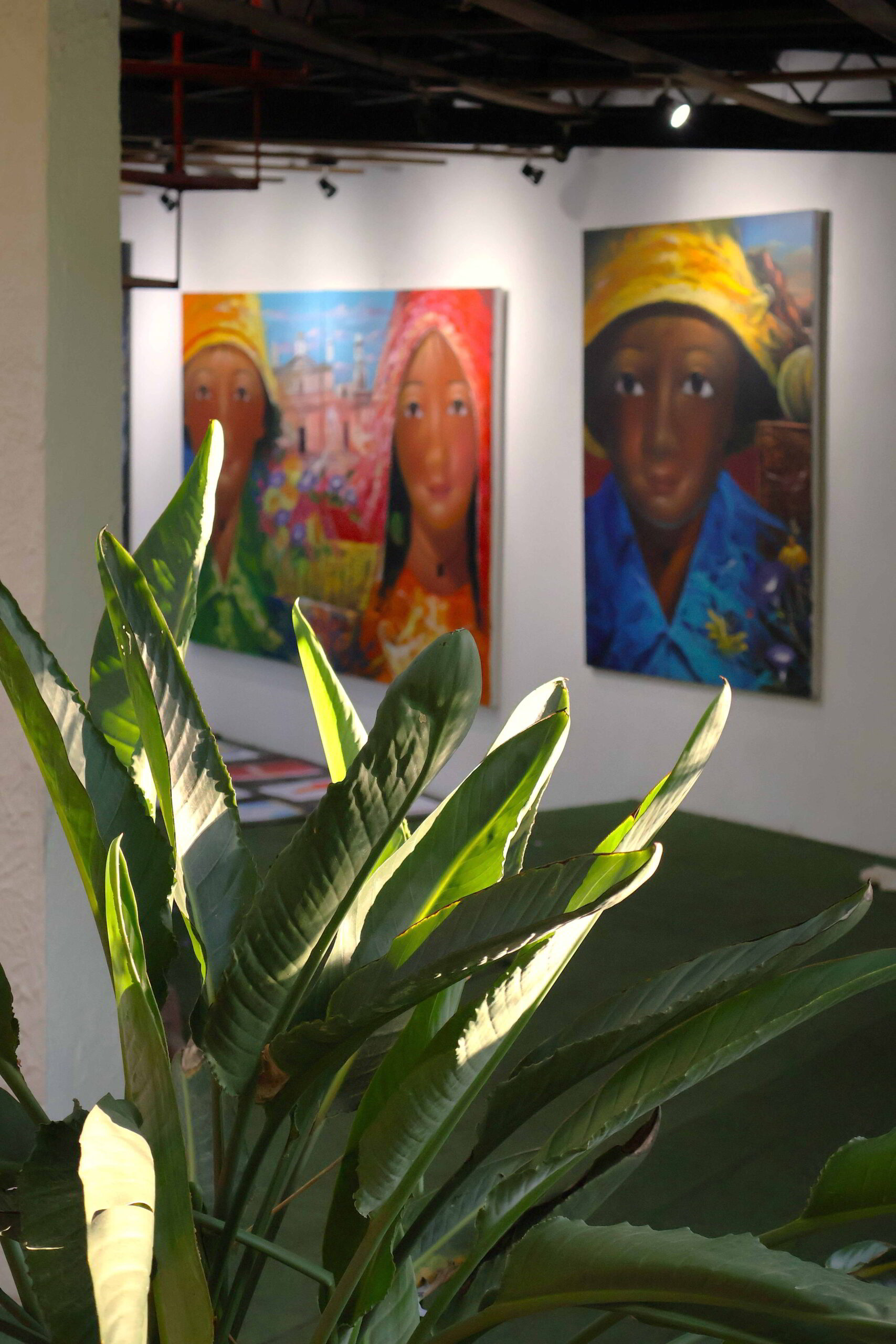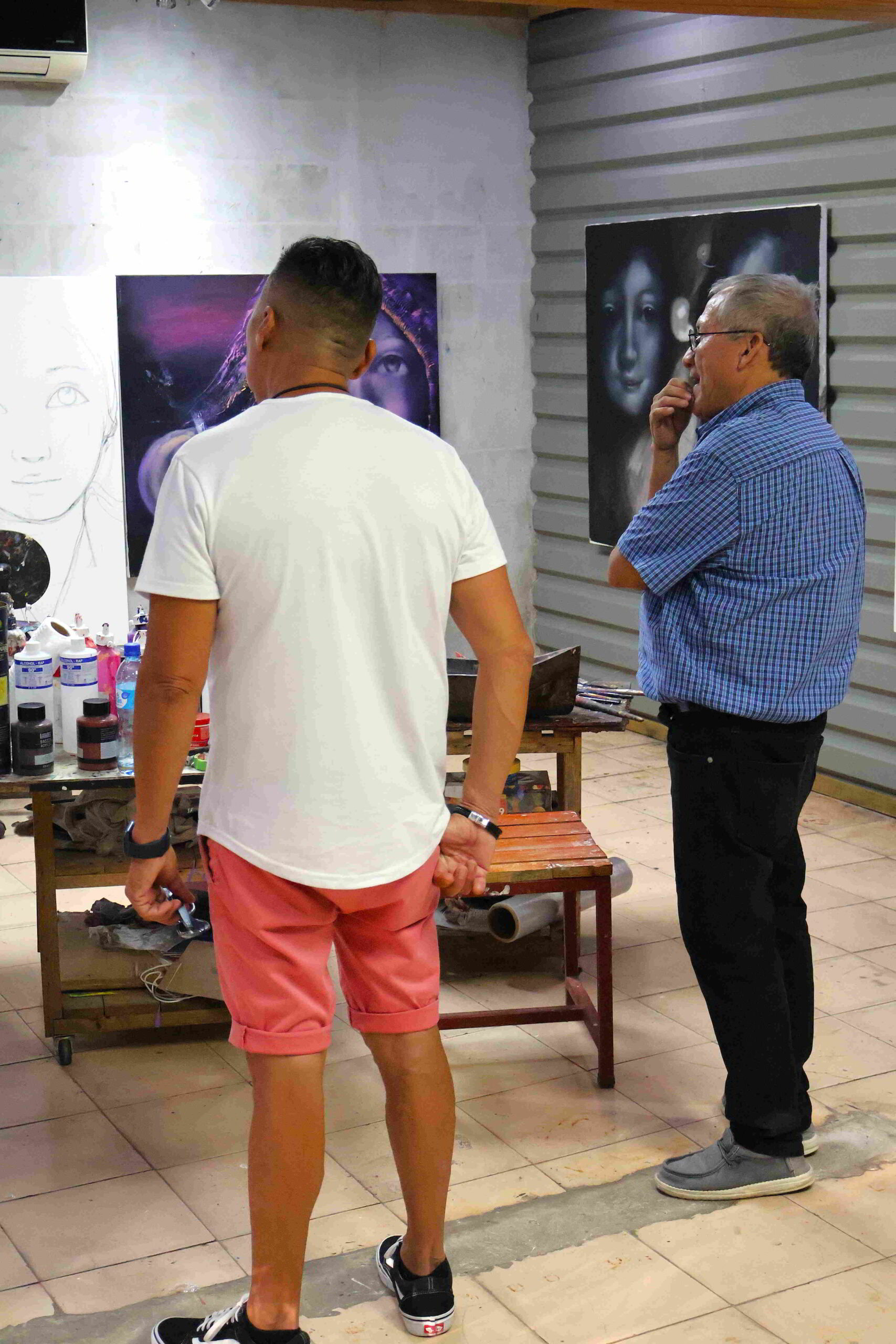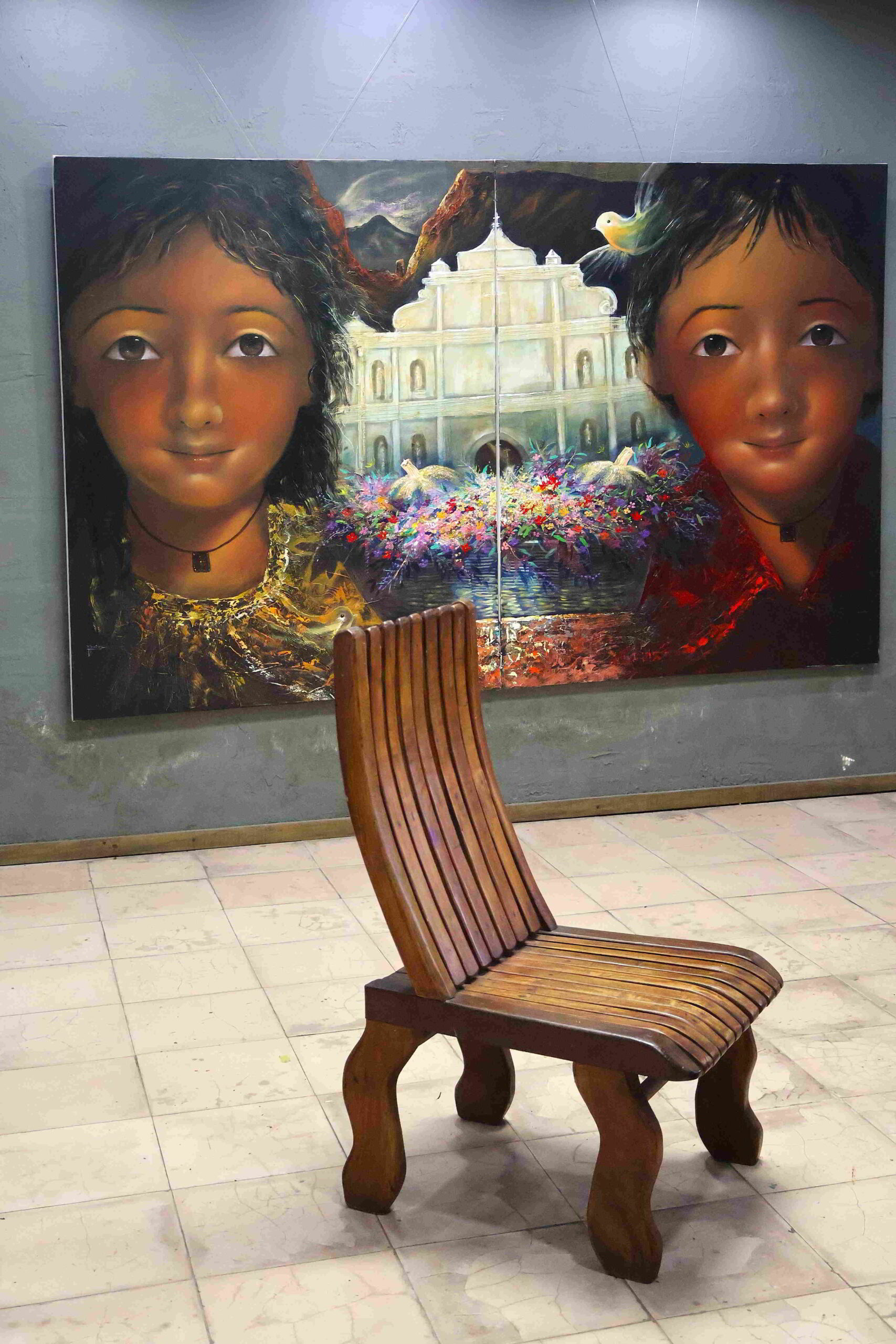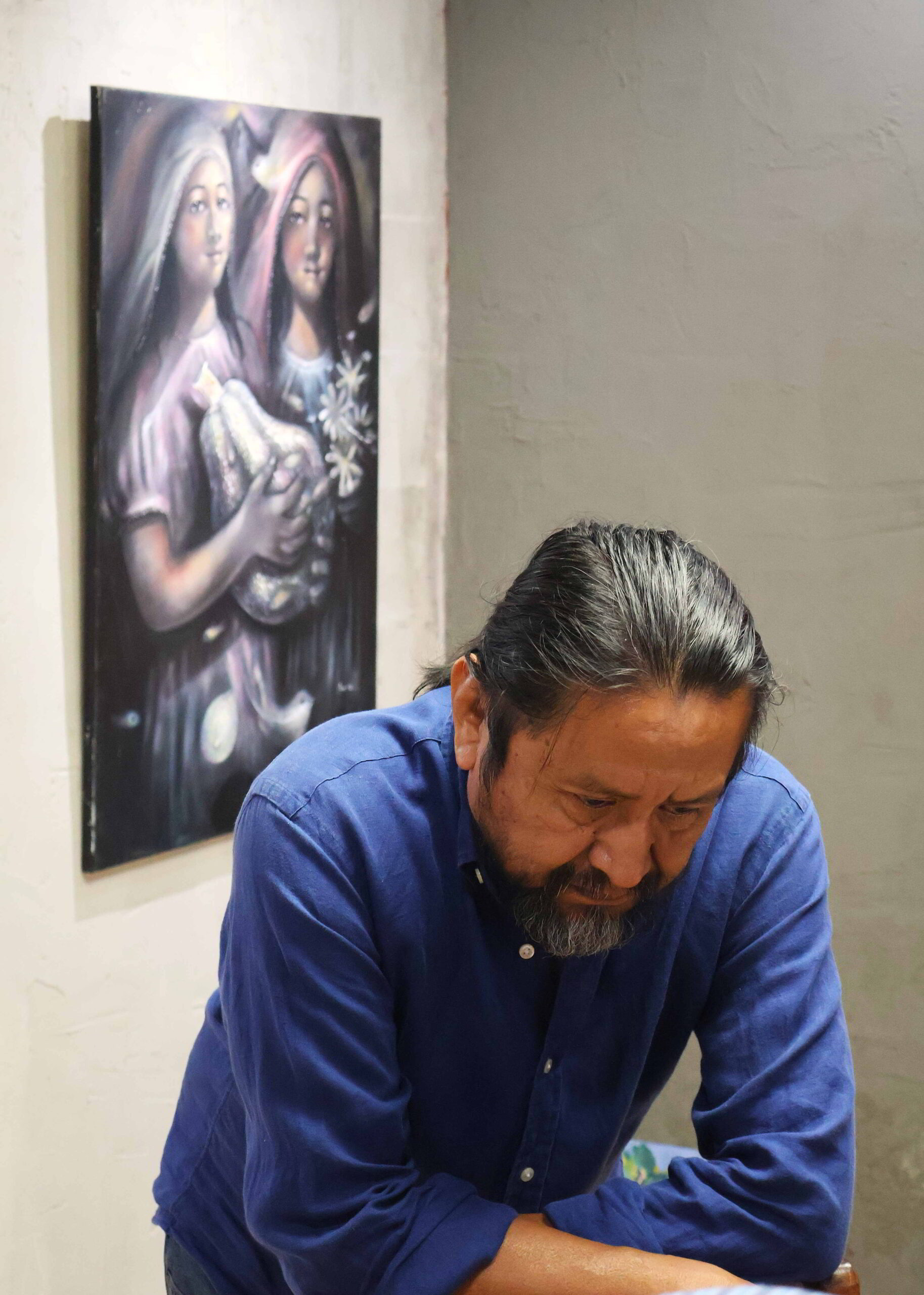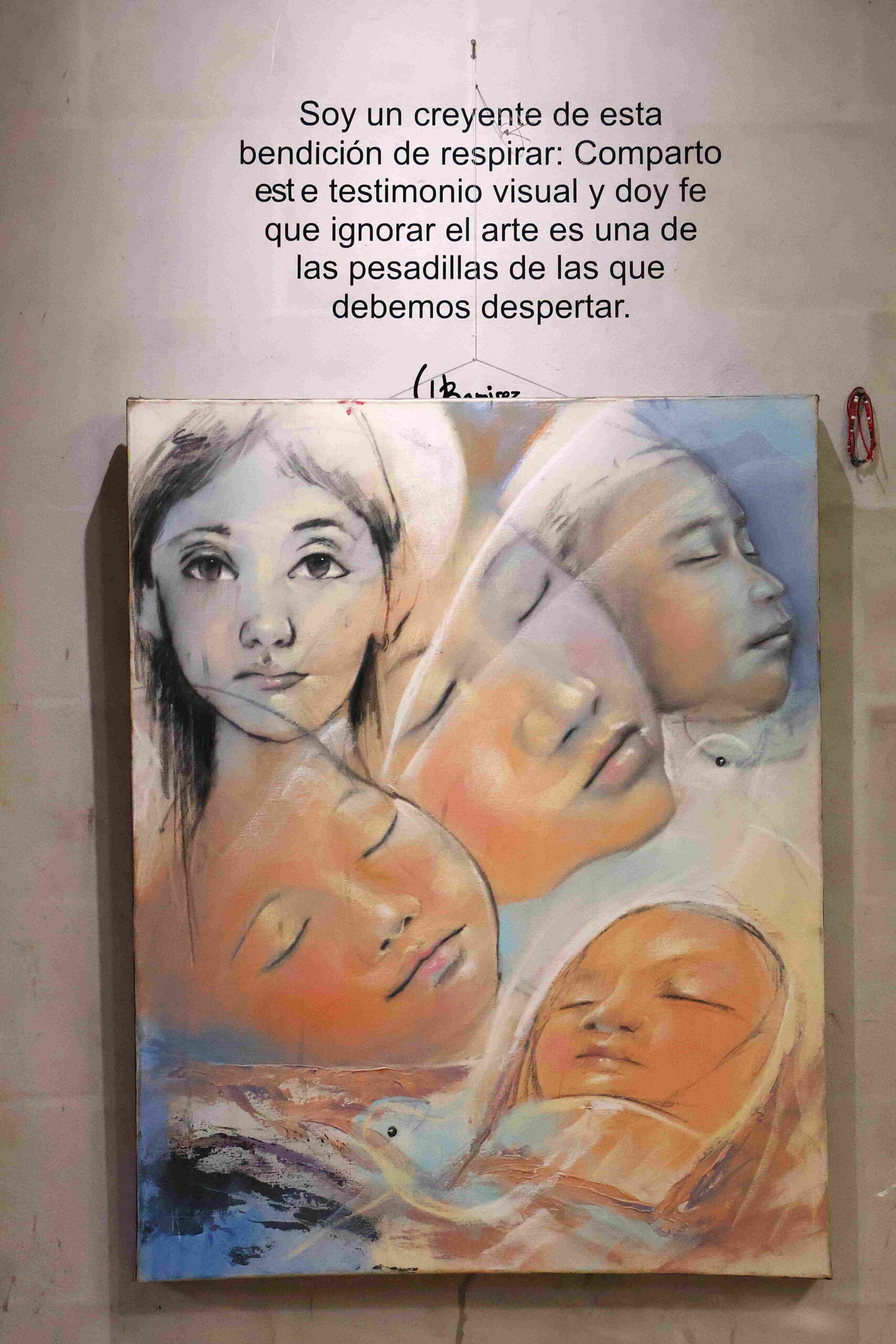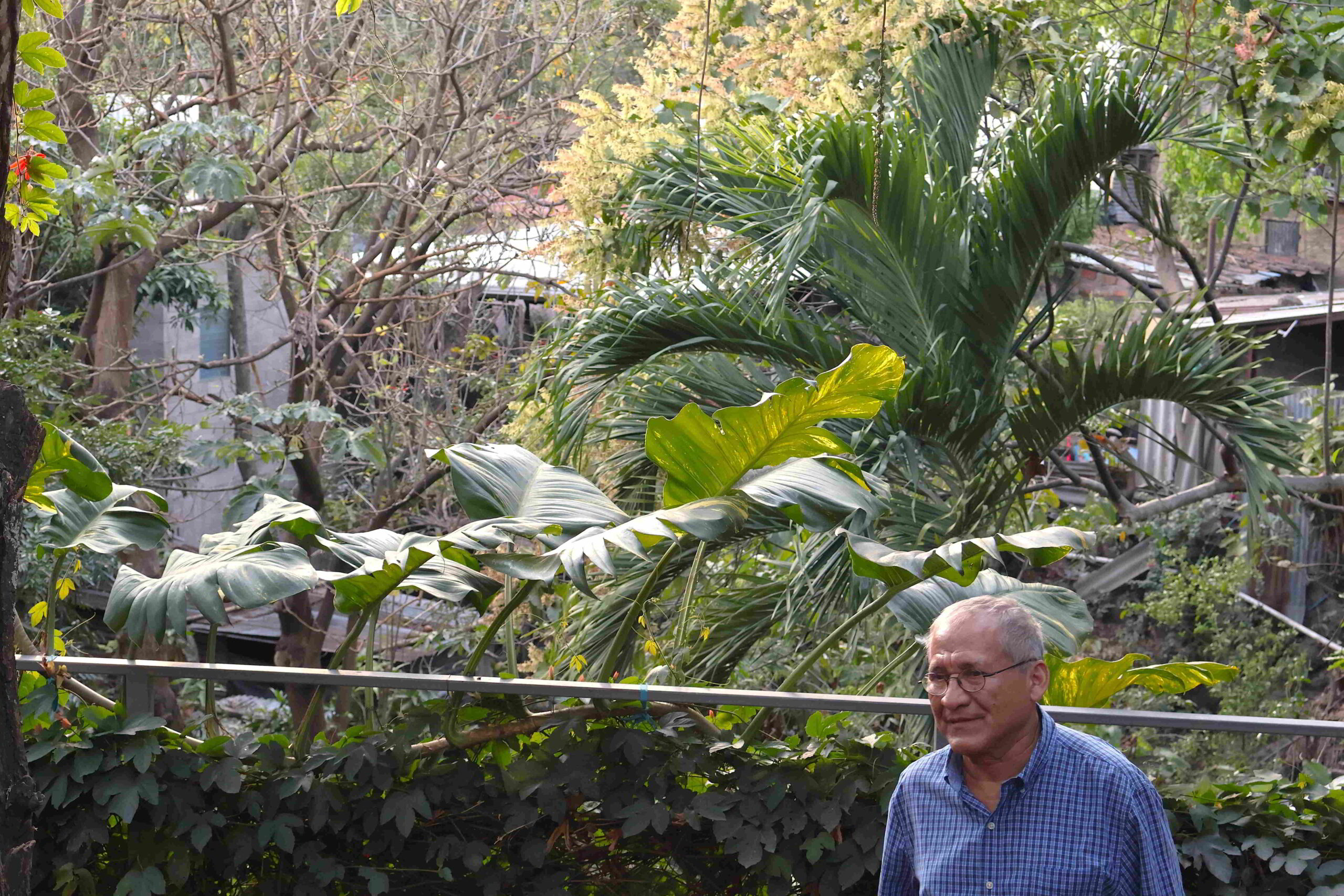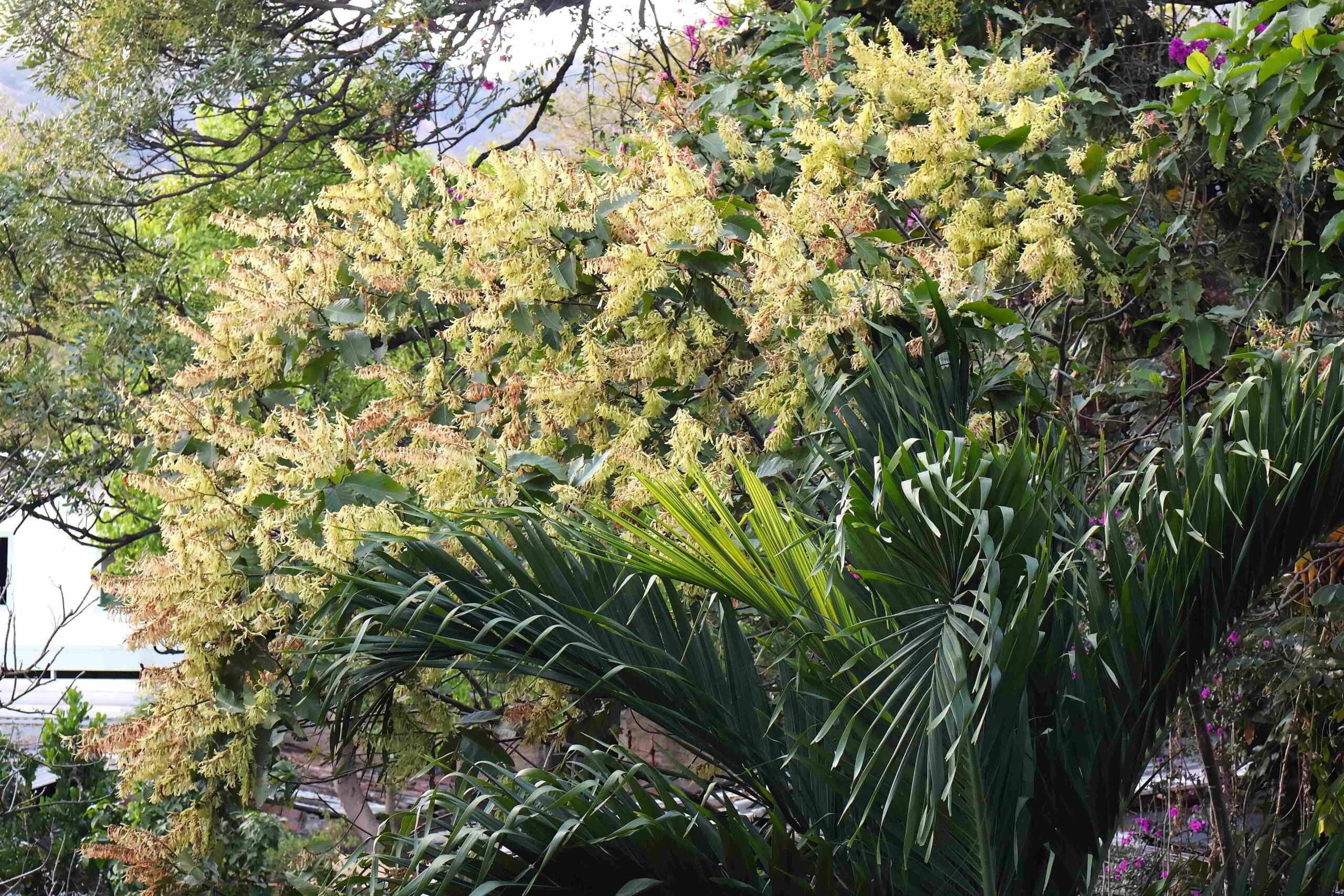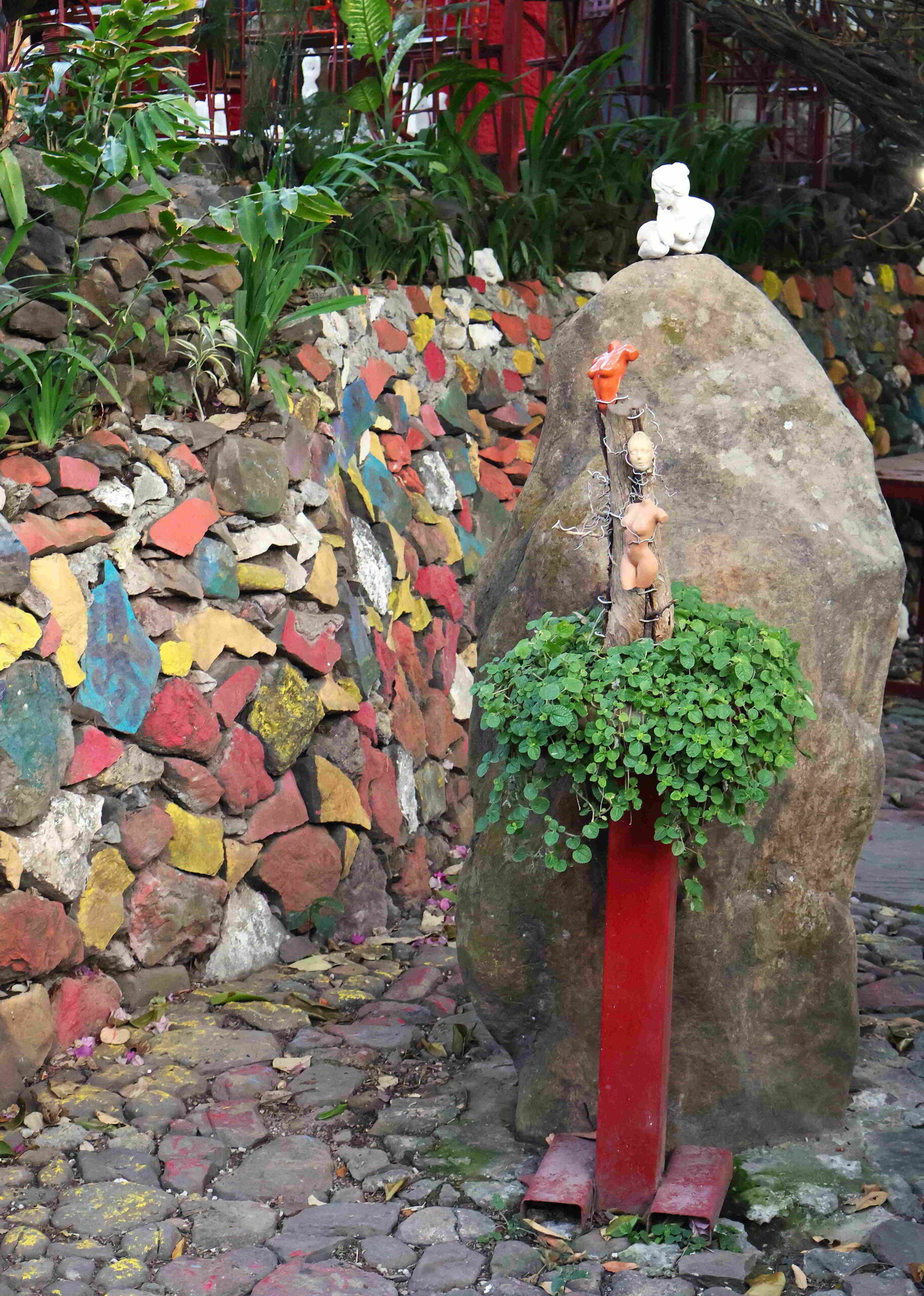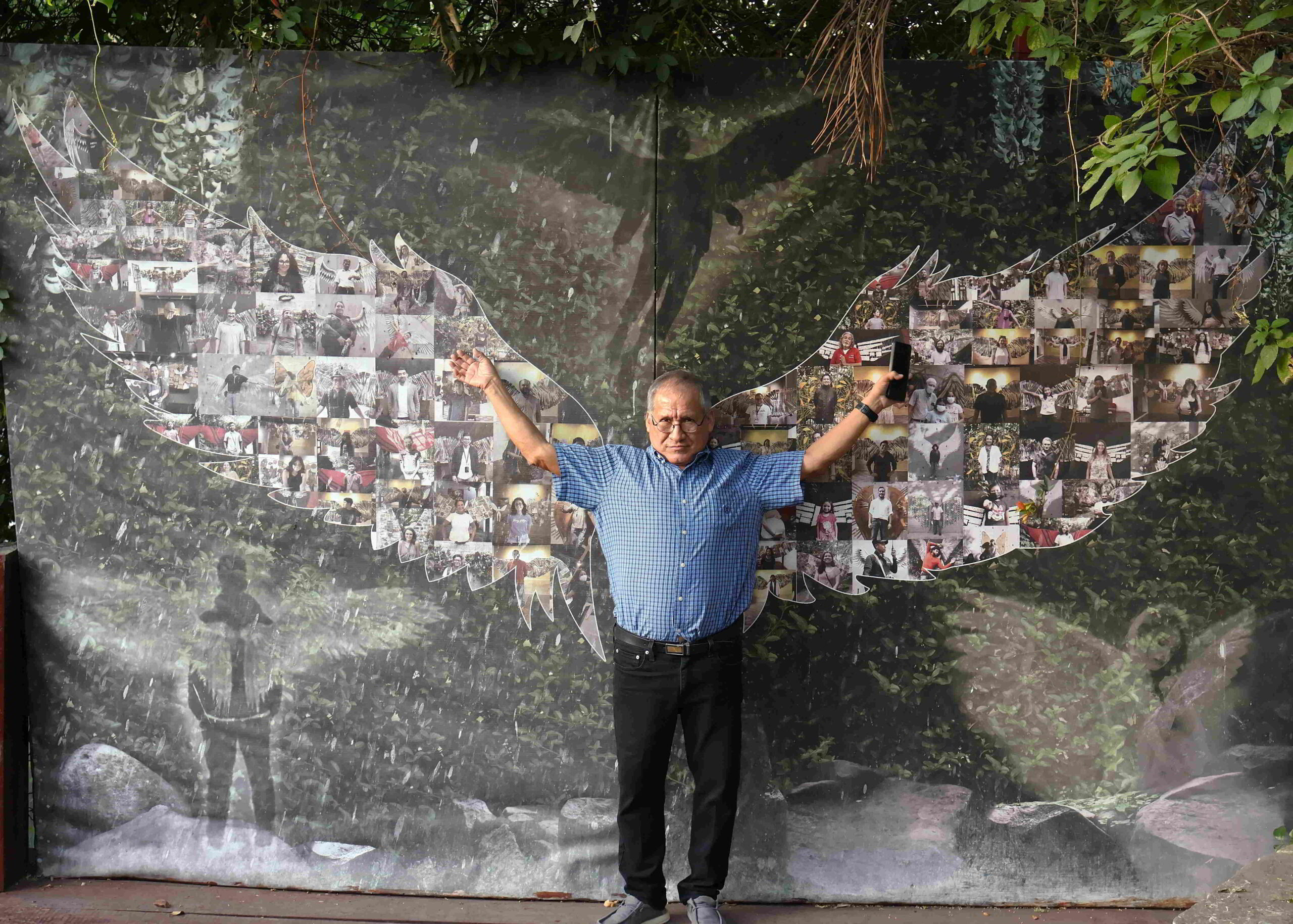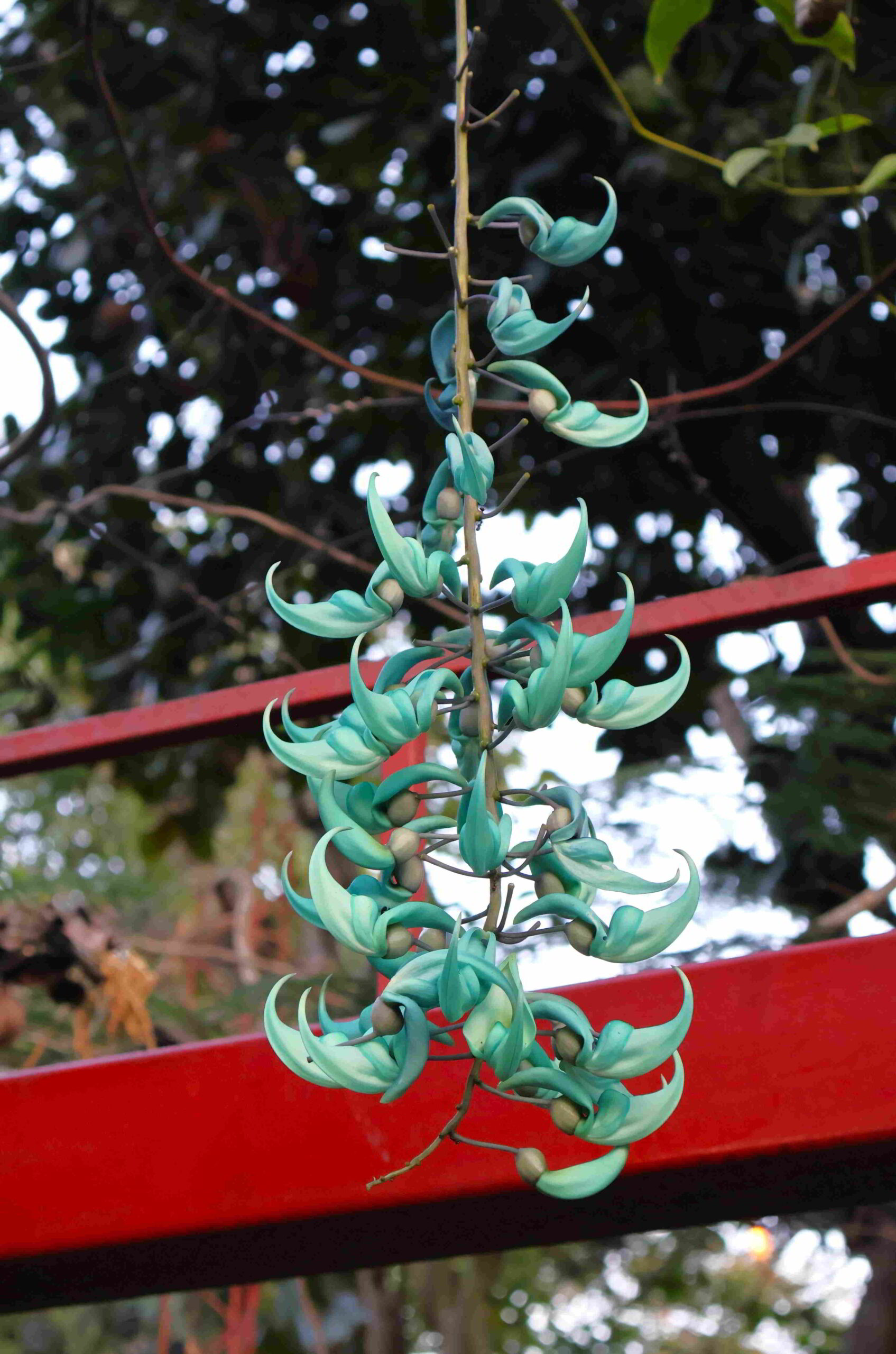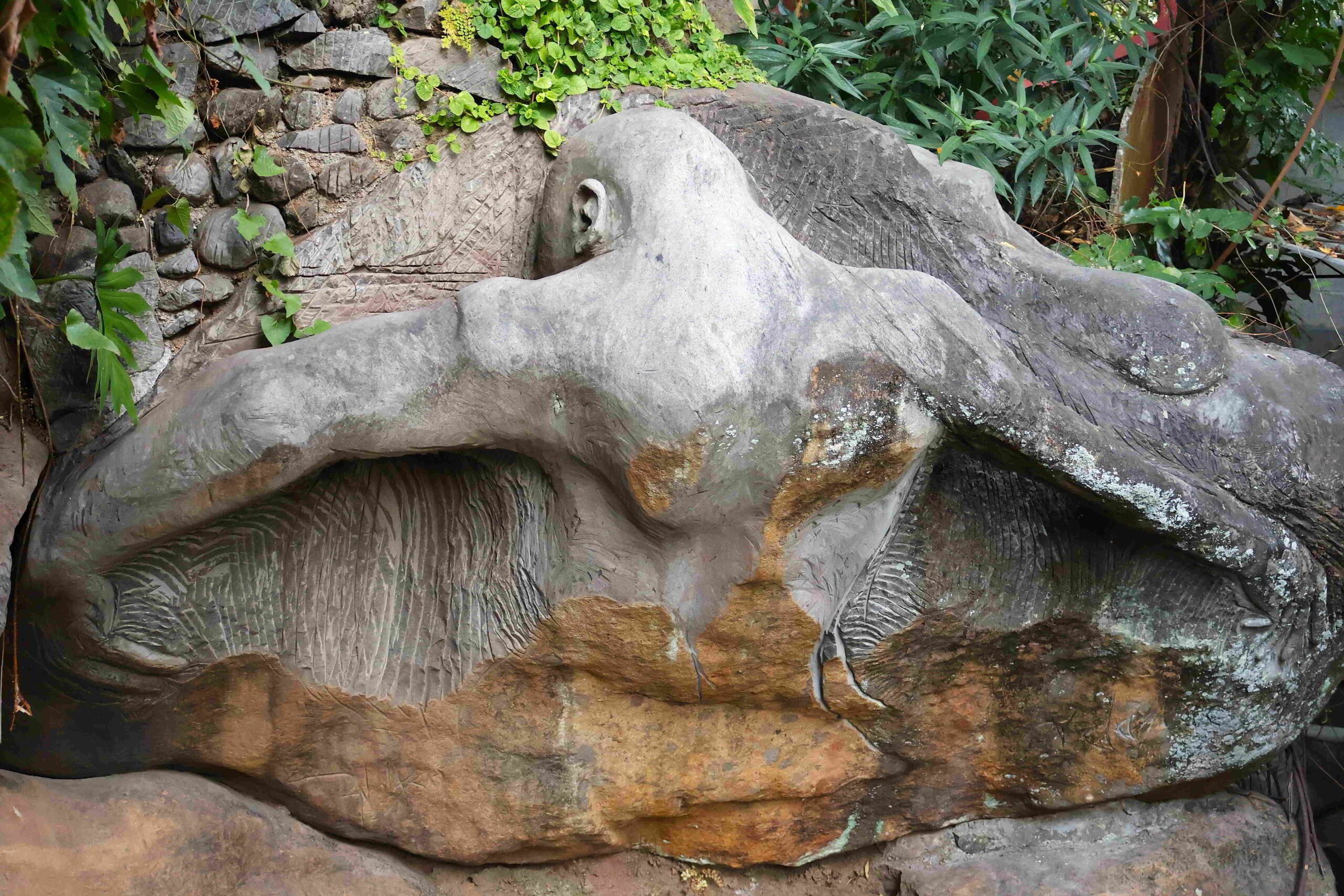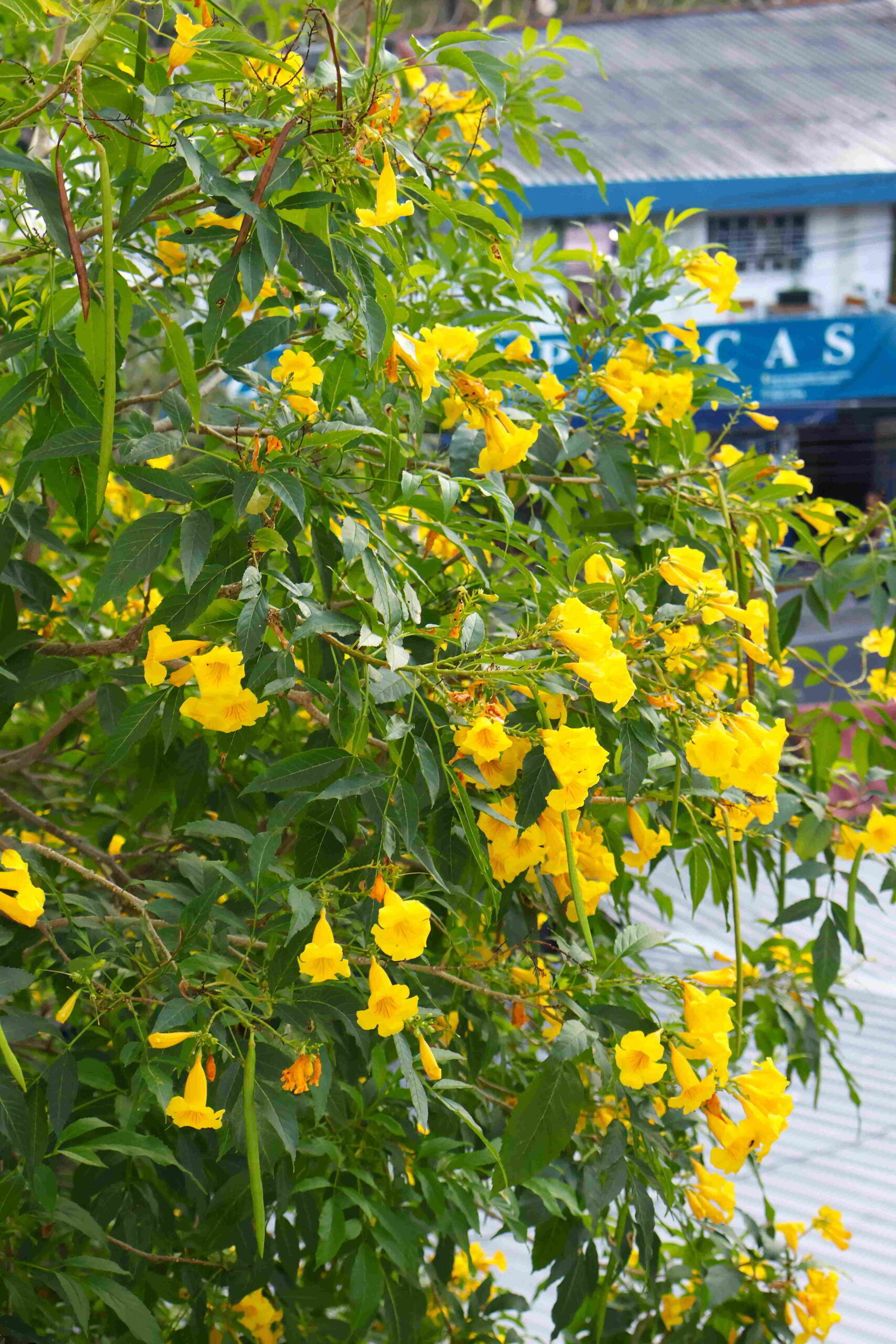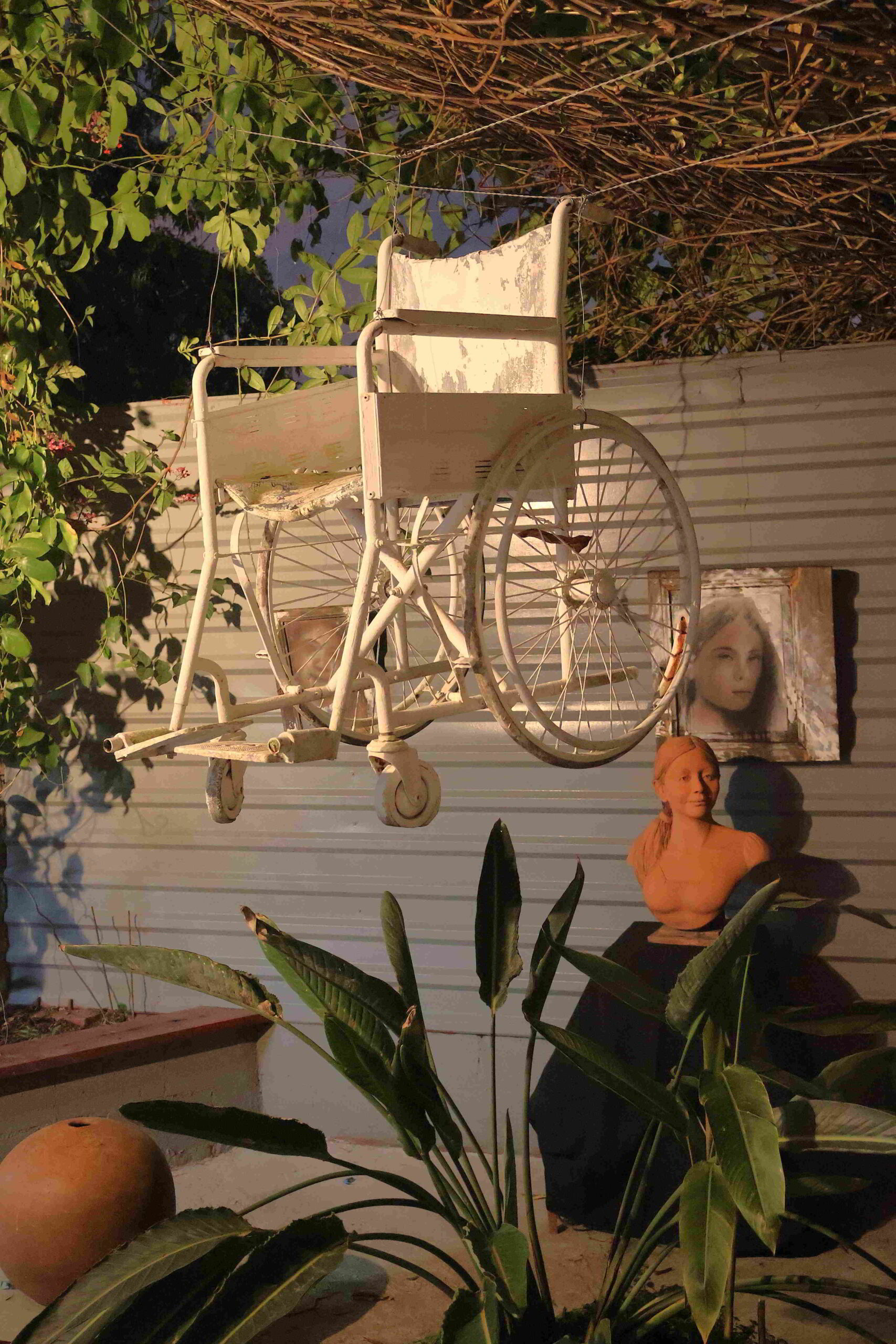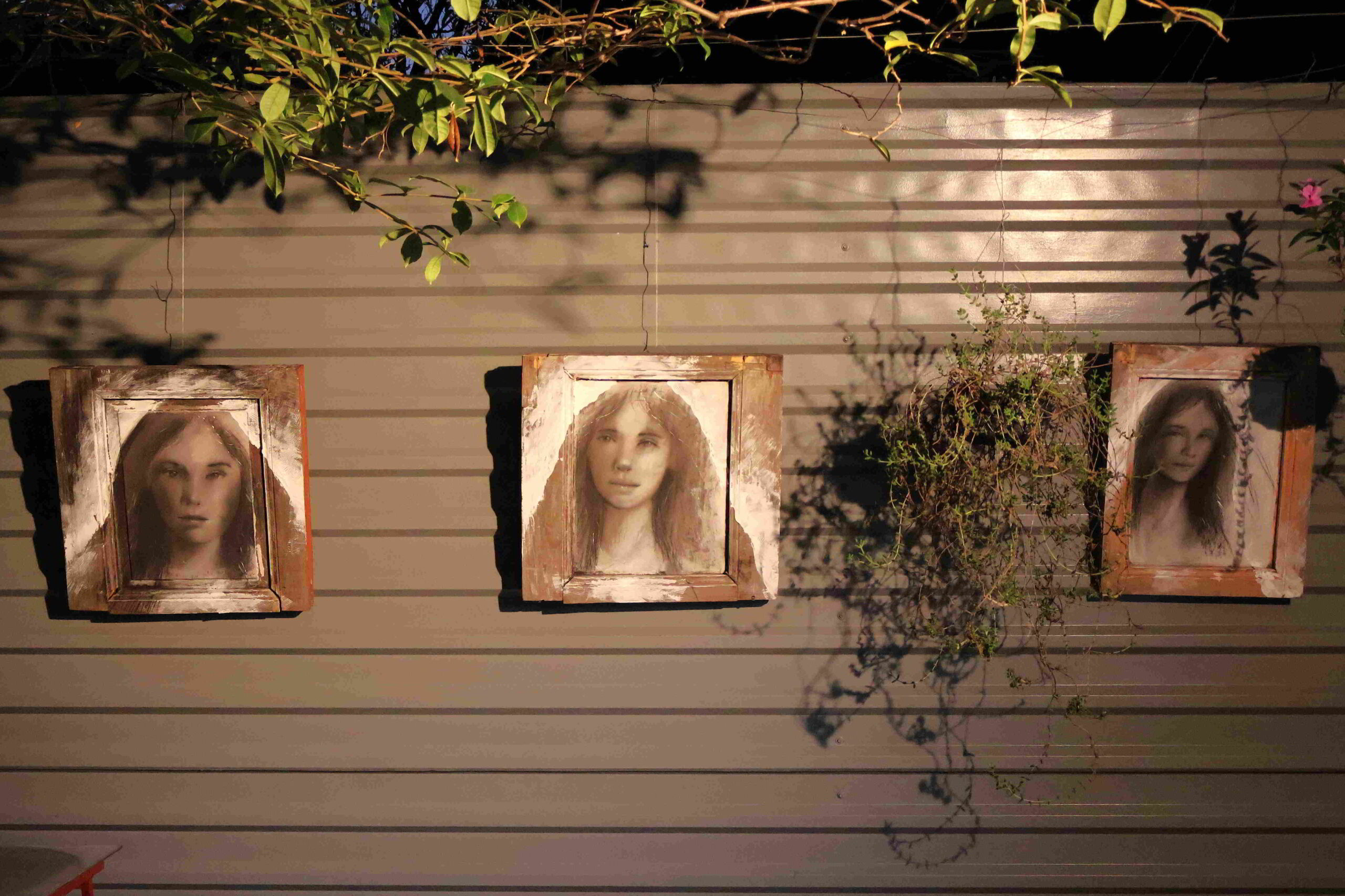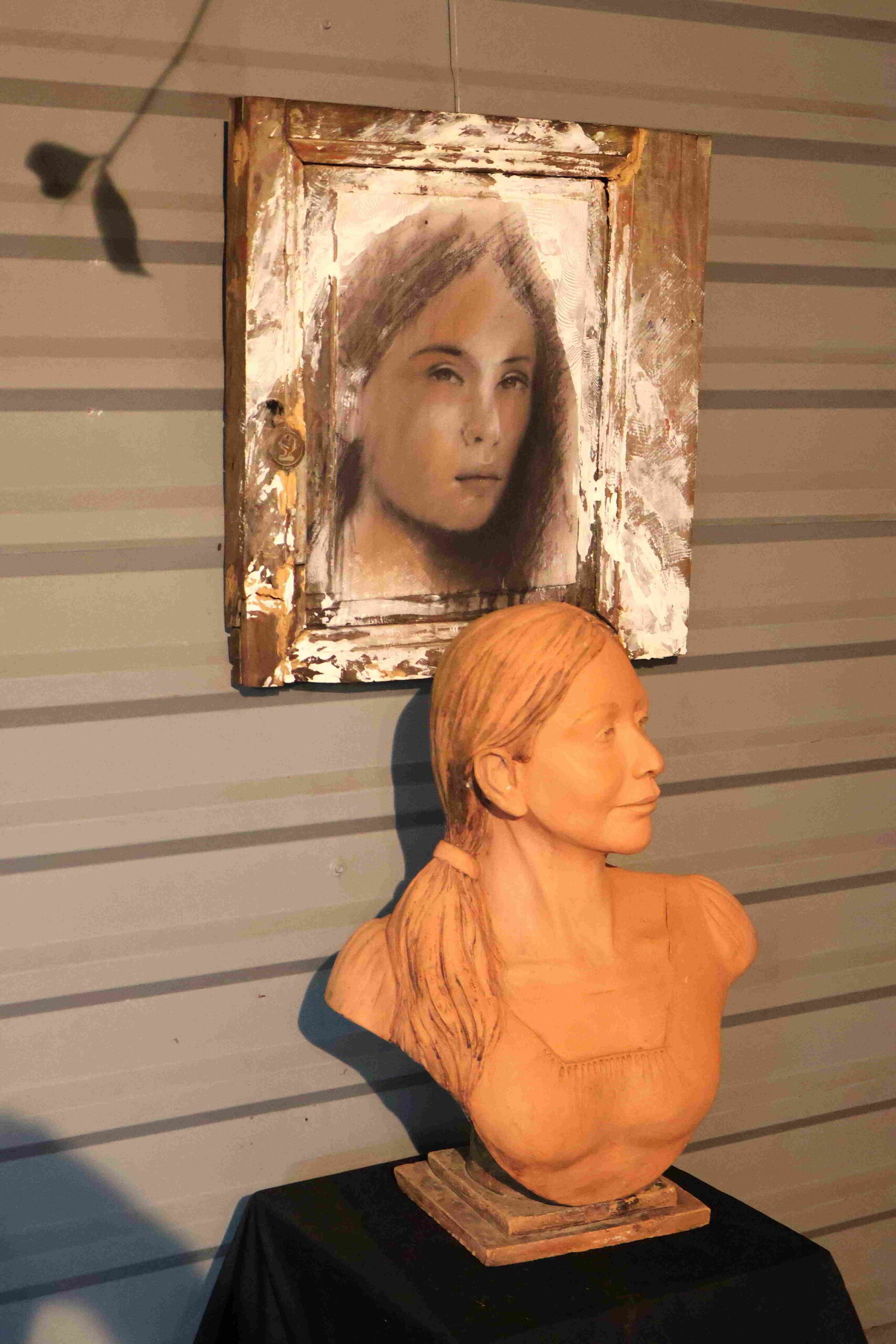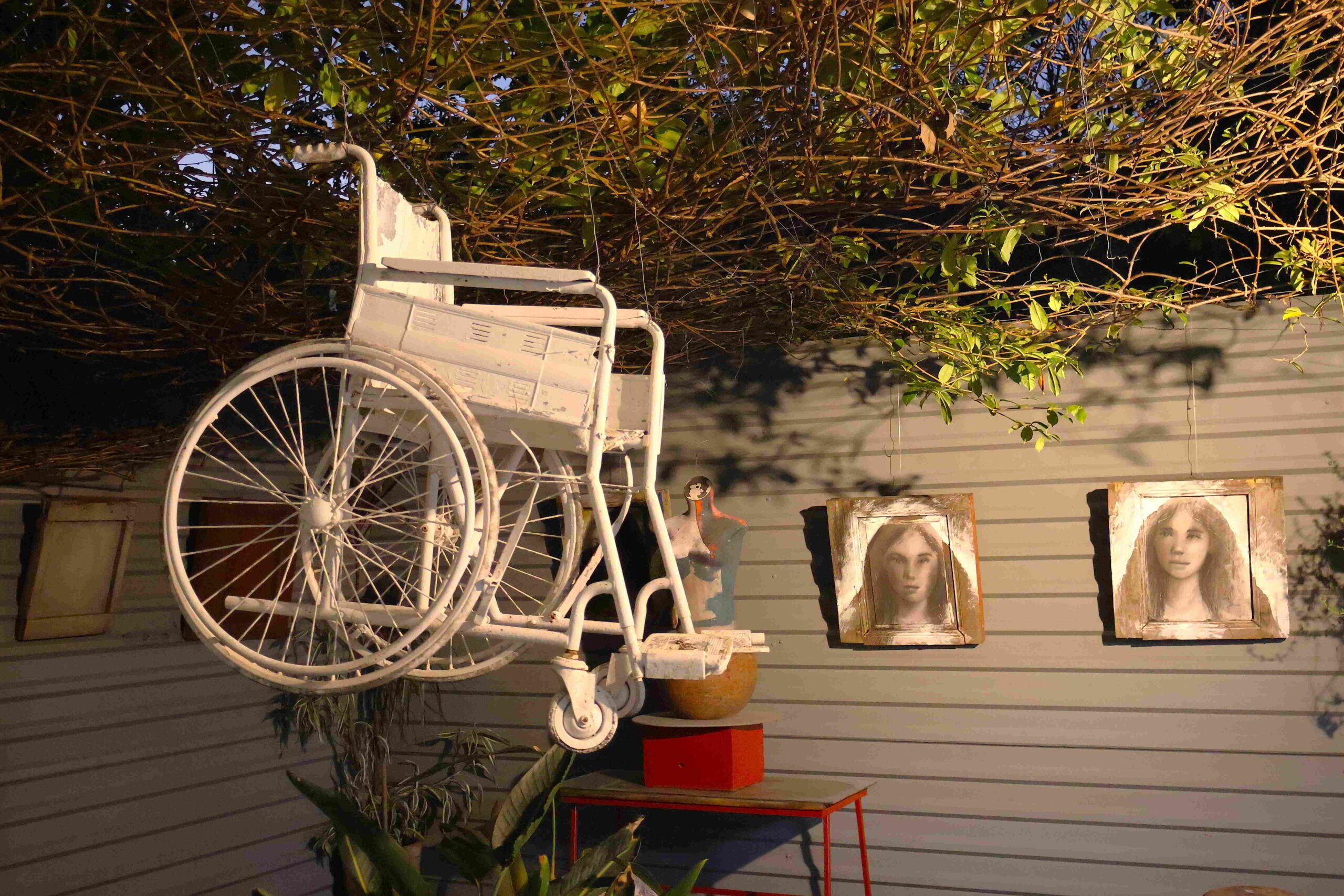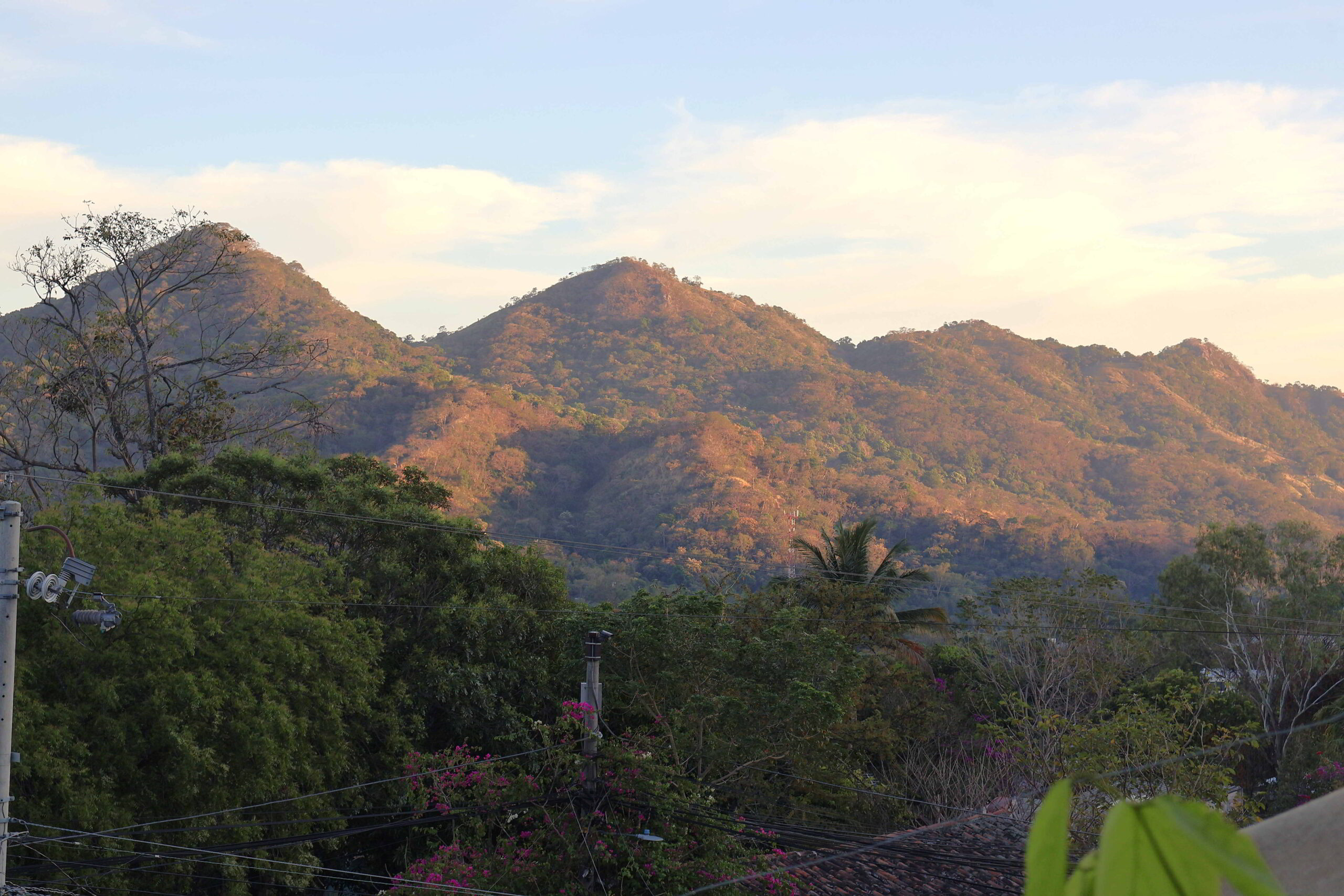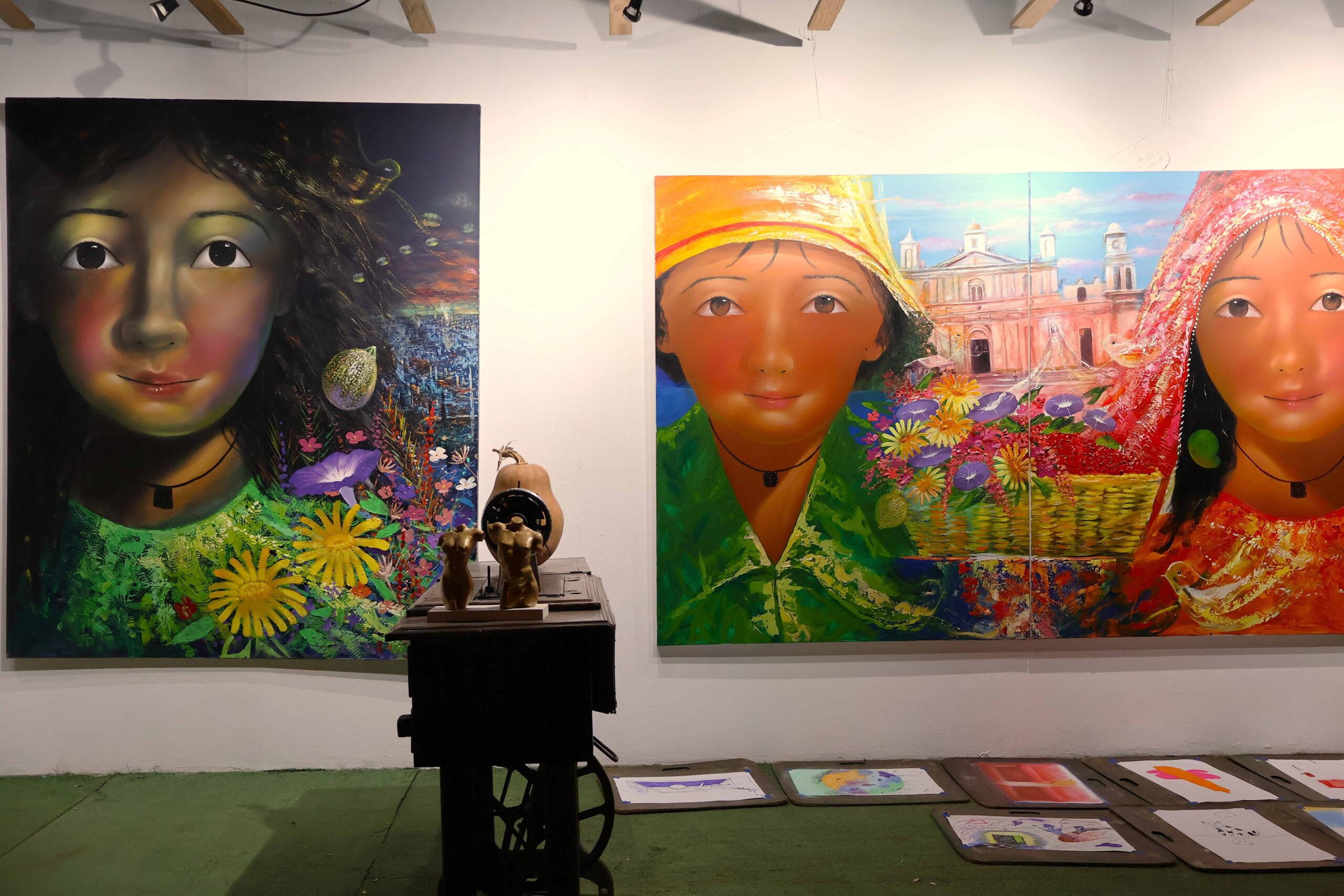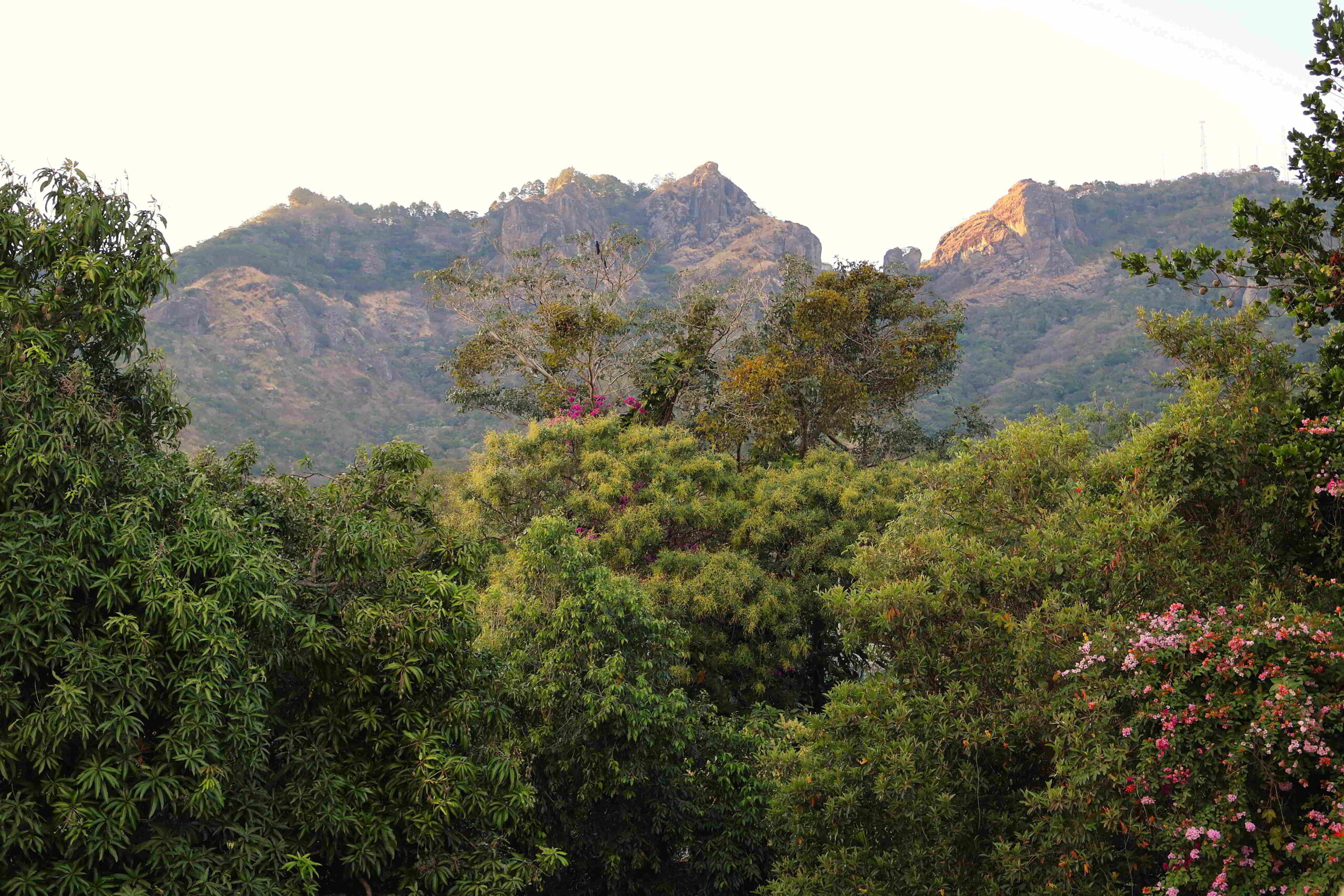February 11, 2025
Today I will explore the area around San Salvador with Romeo and German Galdámez – the former is a driving talent in contemporary Salvadorean art and the latter I know from Vancouver. They plan on showing me important parts of the city and its environs, although I am not as yet quite sure where.
We drive to the Metrocentre mall, our conversation diving into a variety of different subjects. Stemming from a family of seven brothers and sisters whose lives followed more conventional callings, Romeo dedicated his life to the pursuit of artistic expression, which eventually led him to a life of mostly exile in various other countries, including Brazil, Mexico, and Canada.
On the subject of local politics, he tells me that President Bukele may have secured the country, but at a tremendous cost in terms of human rights. The FMLN (Farabundo Martí National Liberation Front, the revolutionary group that continued as political party following the 1992 peace accords) were in power for years prior to Bukele’s ascendency, and achieved tremendous gains in terms of social progress, creating institutions that promoted social equity, education, as well as the enfranchisement of poor and indigenous peoples – yet Bukele is now dismantling a lot of these efforts.
More worrying, the populace that once had a clear understanding of the opportunities offered by social progress have now pivoted to firmly embrace an effectively totalitarian and repressive regime that invalidates many of their concerns. This is a phenomenon happening through the world of course. While people always have legitimate concerns and look elsewhere for answers, they have also grown accustomed to living in a relatively liberal democracy, and have forgotten what the realities of the alternatives are, with which El Salvador’s history is riven.
Commenting on his experiences in Mexico, he contrasts Salvadoreans and Mexicans in that the former are typically open and easy-going, while the latter can be effusive at the outset but ultimately more guarded and characterized with a unique sense of pride and calling, a sensibility that Romeo tells me emerged with the consolidation of the national identity at the time of the Revolution in the 1930s.
Romeo dedicated his career in artistic expression to the creation of serialized lithographies constructed from images drawn from various provenances, ranging from historic and contemporary cultural, political, and religious references of both his home country and of the cosmopolitan art canon, primarily Renaissance and classical Greek, bound together by geometric washes of colour. Underlining the unique composition of each work are the position, sizing, and pitch of its images and the manner in which washes of colour are used to bind them. For the style that Romeo’s work embraces, Robert Rauschenberg comes to mind, but simply because he is a dominant figure in modern collage art, although in contrast, Romeo’s work is more strongly characterized by the power of constituent images and their cultural and political import.
His work provokes questions regarding the legitimacy and primacy of historic, cultural, and religious iconography, for example, classical European canon in contrast with pre-Columbian and contemporary Latin American sensibilities, normative culture versus the expression of the subjugated. Colour is used to create powerful bridges between groups of images, but also beholden to its unique emotive power, bringing to mind the work of colour field artists such as Mark Rothko and Barnett Newman.
The coffee at the MetroCentre bakery is abysmal, but the conversation interesting; however, this is only a prelude to the destination we are seeking out today, located on the crest of the jagged hills that survey San Salvador from their southern periphery. We weave along the undulating road, rising further and further until we reach a realm of green and fantastic views, the verdant valleys dropping below us to either side, the terraces of well-resourced eateries luring evening and weekend visitors into canonical gastronomic indulgences focused on the Salvadorean staple, the pupusa. One establishment follows the other, higher and higher, and then finally, we come upon the Puerta del Diablo, with its glass-encased pier that extends outward from the cliff looking out over the valley below, two enormous rocks on either side erected as a result of the action of the volcanoes in the area.
There is a darker story to the Puerta del Diablo; during the Civil War, the army brought political prisoners here and threw them off the cliffs. Romeo was incredibly lucky; he had returned recently to the country and was involved in a social agency whose efforts were reported to the government, which subsequently rounded up a number of people involved, including Romeo, subjecting them to imprisonment in squalid circumstances. He was released, but has no idea as to the fate of many of his compatriots; the regime at the time typically executed most of the people from the opposition, but would release a small number to demonstrate that it was respecting human rights. Romeo left for Mexico shortly thereafter.
Romeo mentions that the restoration of the national palace I had visited previously was in fact not authentic to the original construction, as the president had specific ideas about how he wanted the palace to look, so many historic characteristics of the palace were destroyed, such as the floors. It looks very impressive, but doesn’t correspond to the original design. He shakes his head and says that the entire flooring was tossed into the river – I’m not sure if that was meant literally or metaphorically.
Following indulgence in some delicious traditional atole at the neighboring stands, we continue on our journey, weaving further downhill to the south in the direction of the traditional village of Panchimalco, an indigenous and campesino burg that counts amongst the oldest in the country.
We wander slowly along the main street, admiring the traditional style of architecture in this diminutive town, the buildings single-toned, typically one story adobe structures, with lettering painted on the walls advertising the function of the retail establishment contained therein.
The road arcs broadly around the stunning Baroque church that dates to the earliest European settlement, the whitewashed facade dramatic against the stunning rock formations of La Puerta del Diablo high up in the distance. This must be the most dramatic of small towns in El Salvador, but then I haven’t seen very much of the country. Certainly, it is quite astonishing seeing such an authentic town so close to the capital.
Romeo knocks on the door of an innocuous yellow house at the far end of the village, and after some wait, a beaming bearded figure opens, beckoning us to enter into what appears to be an art gallery – although when I ask the man whether this is an art gallery, he responds with a strange mien.
Miguel guides us from space to space, revealing an increasingly contorted labyrinth of nebulously-defined areas. In the forecourt, well-lit rooms used to exhibit painting and sculpture, the presentation somewhat rudimentary if not sloppy, a possibly deliberate effort to subvert the commodification of art that such a display could engender.
The subject matter displayed varies in topicality and quality, clearly that of various artists, although a distinct portion visible at the outset has been made by children, as the nominal purpose of the foundation is to foment the artistic talents of children, and provide a regular art clinic for local youth. As Miguel Angel is a painter himself, his canvases are displayed as well, characterized by clusters of two-dimensional images painted with washes of colour and dominated by Botero-style round faces.
The genesis of the project that Miguel Angel drives was an educational program for youth that stemmed from his and his peers’ frustration at the lack of opportunities that art students would face when graduating from school. He has effectively created a program with unique resonance in the country in which many campesino and indigenous children from the area participate. Given the proximity of Panchimalco to San Salvador, children also participate from the neighboring urban environment.
Traversing the realm of errant walkways and incongruous staircases, sightlines impeded by feral swaths of green and exotic flowers, we come upon a recessed chamber lined with female portraits in black and white charcoal with tinges of sepia, the depictions flowing from the canvass onto the frame, and in the spirit of photographic interpretation, flowing from precise representation to slight abstraction.
The student who made these paintings had at one point found himself with a group of four other friends who were attacked and killed by the MS13; he alone survived, but was no longer able to walk due to his injuries. With the support of the foundation, he learned to become an artist, and grew in stature and repute over subsequent years, despite no longer being able to walk.
Romeo and Miguel are notably different people, the former easy-going but structured and focused in his presentation, the latter much more driven by the enthusiasm of the moment and engaged story telling. They have known each other for decades, and are now thinking of collaborating in some fashion.
Romeo used to produce art almost exclusively on the medium of paper, but the family home in the village close to Suchitoto where Romeo now lives does not have an appropriate environment for such work, as it is too hot and humid. Even if he were to produce printed works as he has done historically, he wouldn’t serialize them, rather, produce single copies of a lithograph, as they would have limited shelf life in an environment that wasn’t climate controlled.
It is getting late, and Miguel Angel certainly isn’t running out of energy. The Supremo beer I have been enjoying is incredibly good, but is having some effect on me, and I know the evening will still be long. It has been an incredible experience to spend the evening in such a unique community artistic project, truly the highlight of my brief visit to this unique country in Central America, thanks of course to my friends here.
We carefully make our way down the various staircases and paths to the lowest level of the property and the rooms in the main building that contain the well-illuminated exhibits of paintings that lend the space a sense of being an art gallery. To return to Mejanicos to the north of San Salvador (where we are staying), we need to return all the way back to the mountain top we came from earlier, then descend toward the southern tip of San Salvador, the thick ribbon of traffic running for kilometres in the opposing direction a testimony to the amount of people who make evening and weekend pilgrimages to the area of the Puerta del Diablo to indulge in the pupusas the eateries on the ridge are famous for. I can certainly attest to their quality, although I am not sure I would want to spend that much time stuck in traffic!
